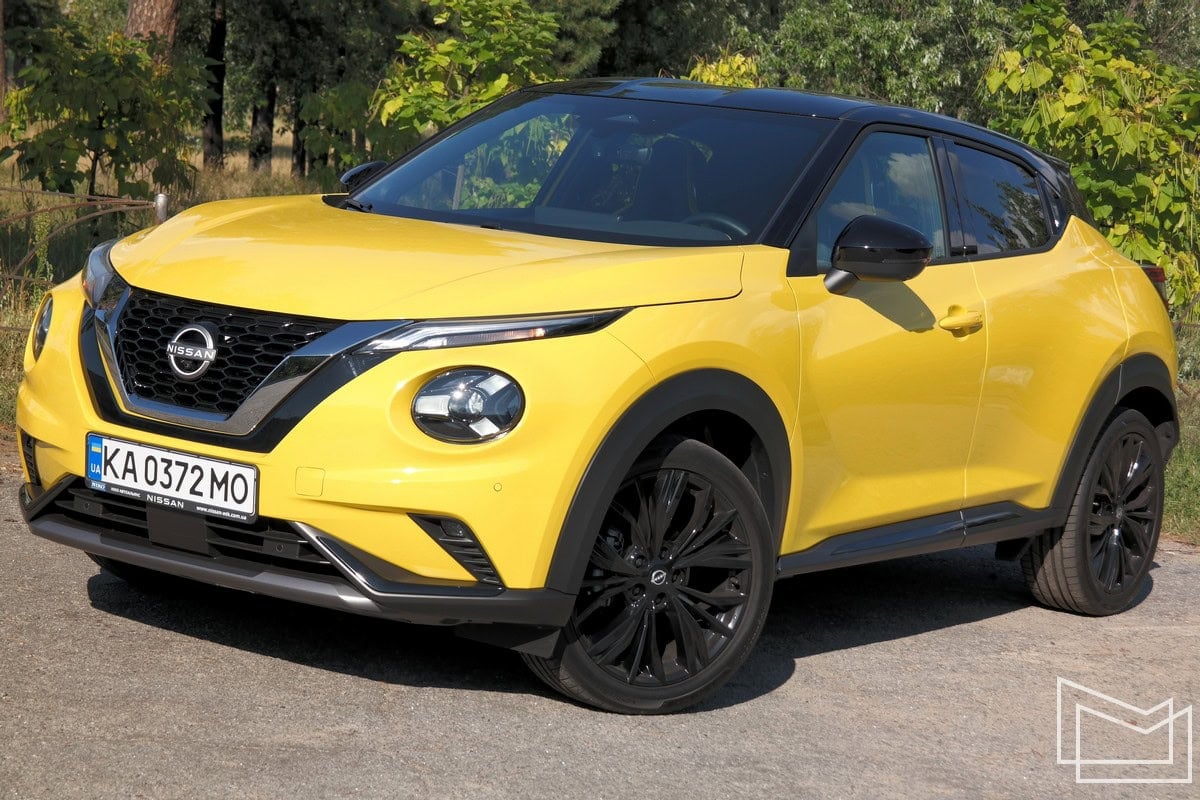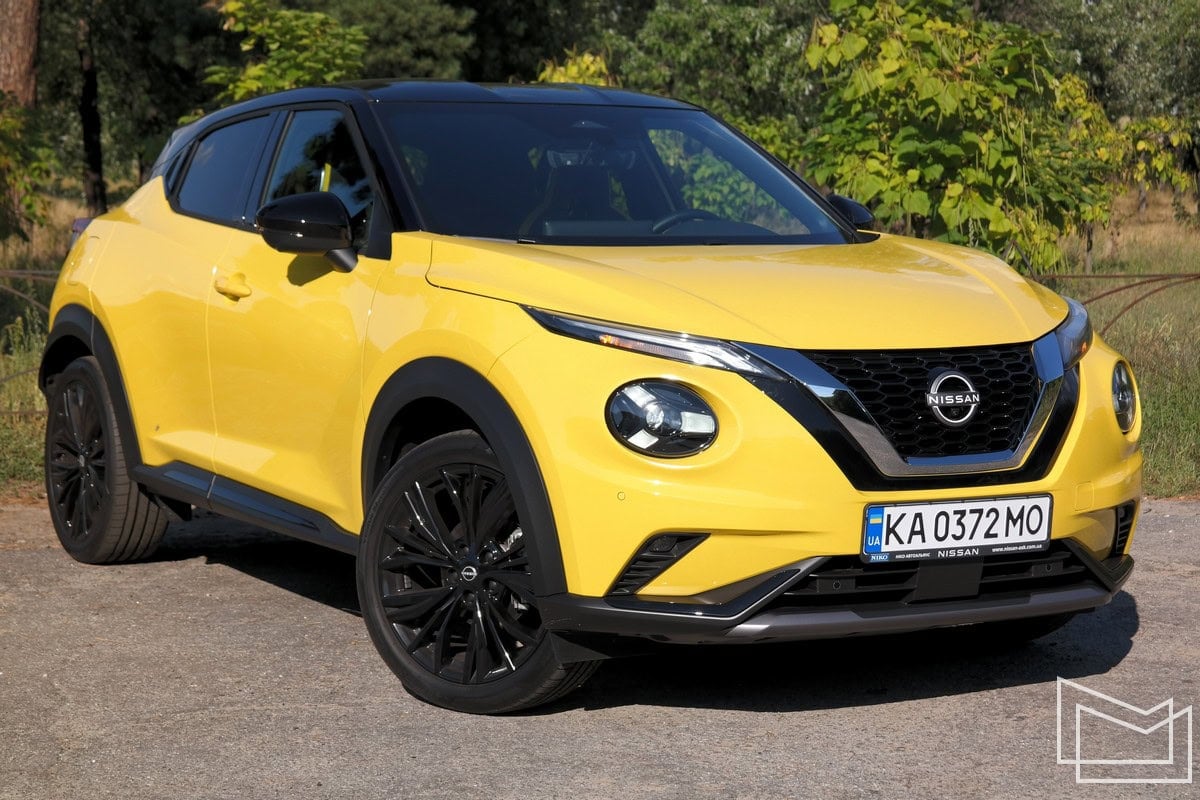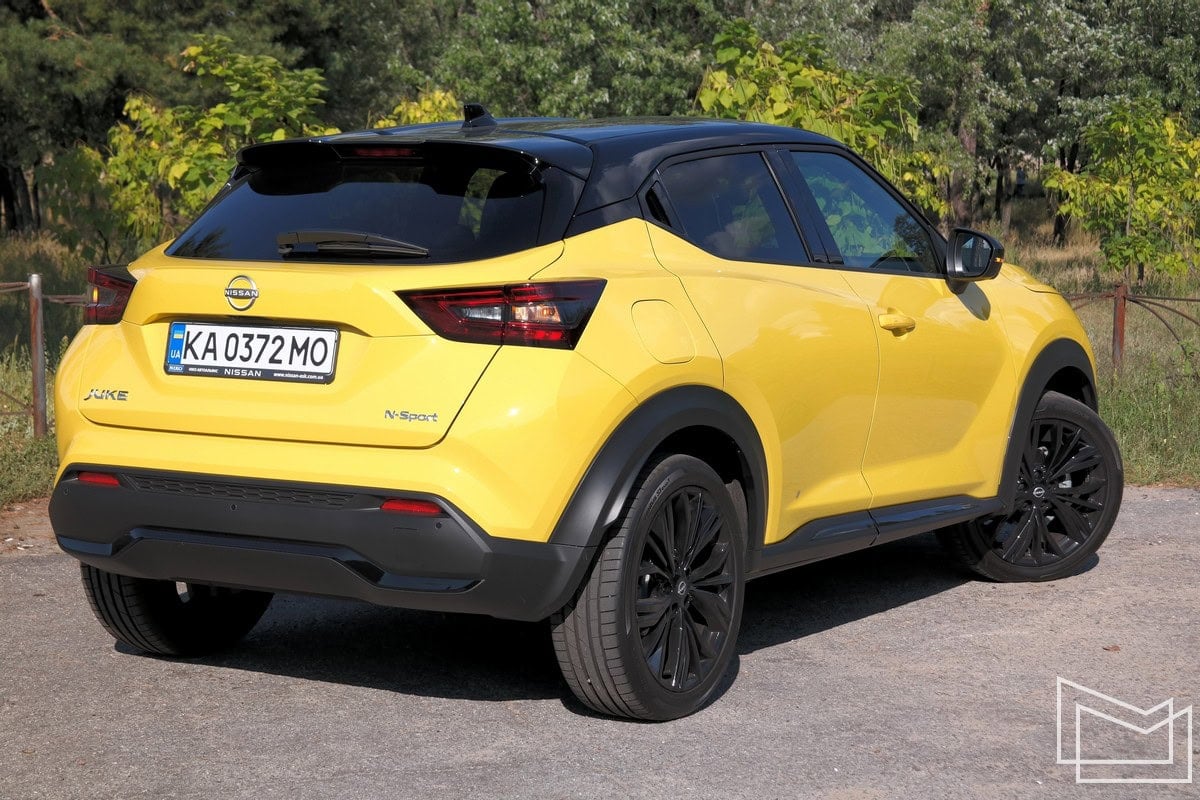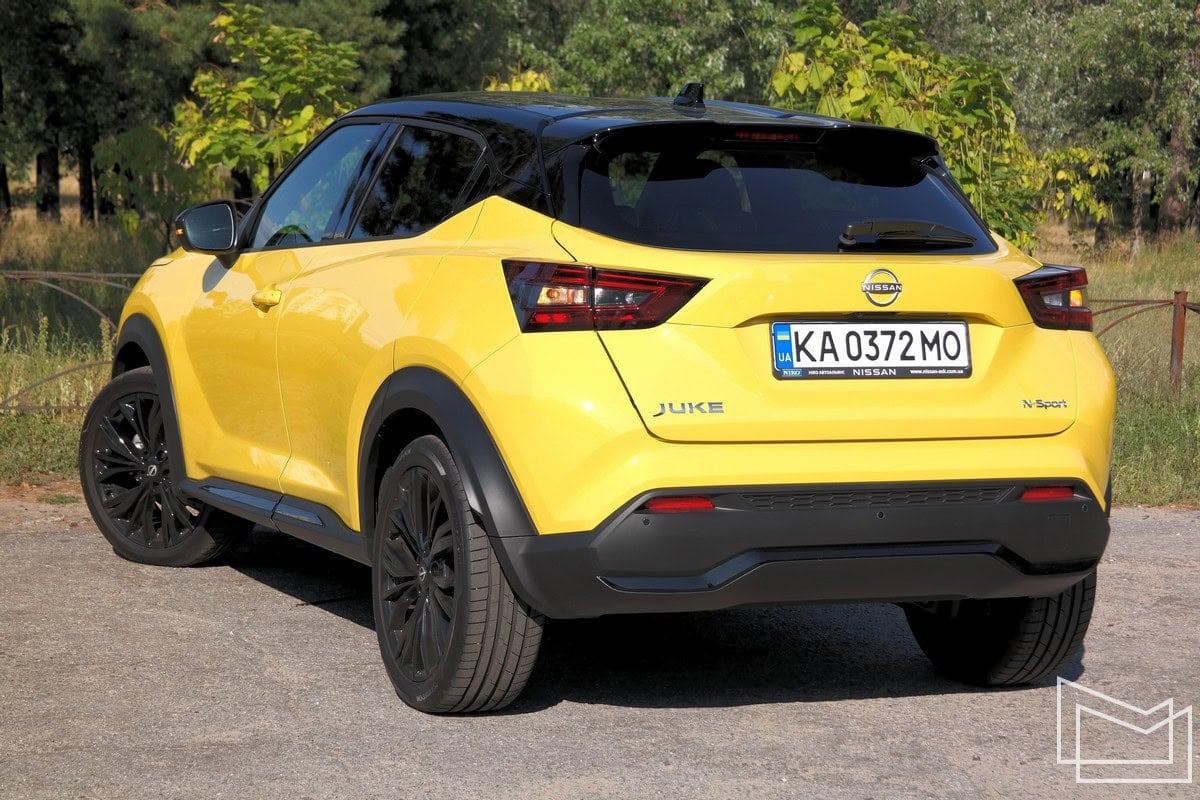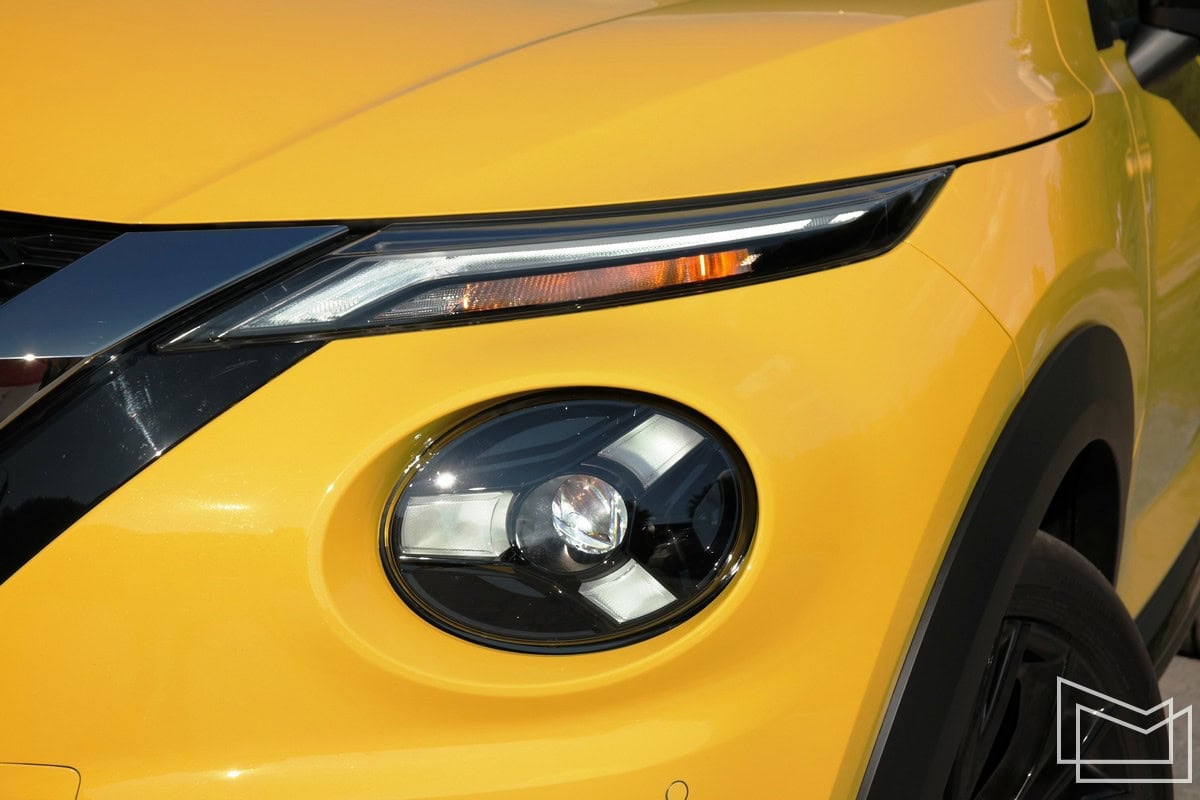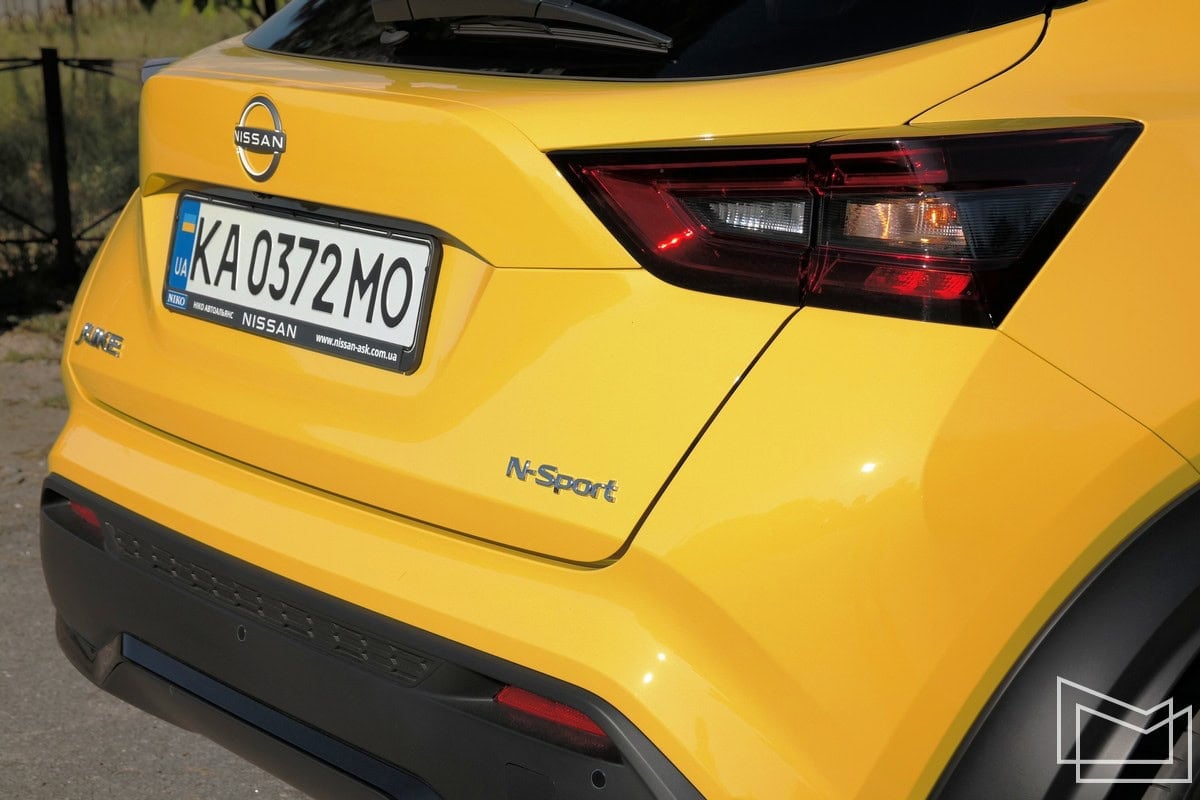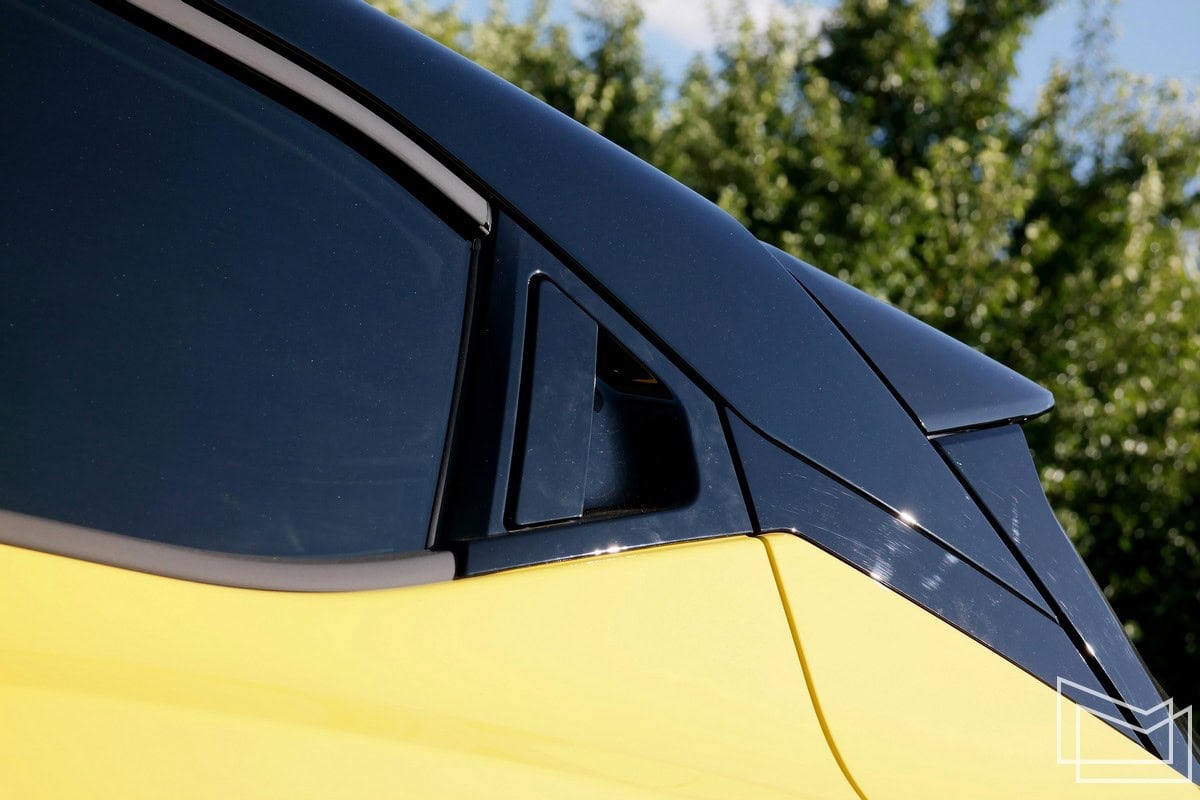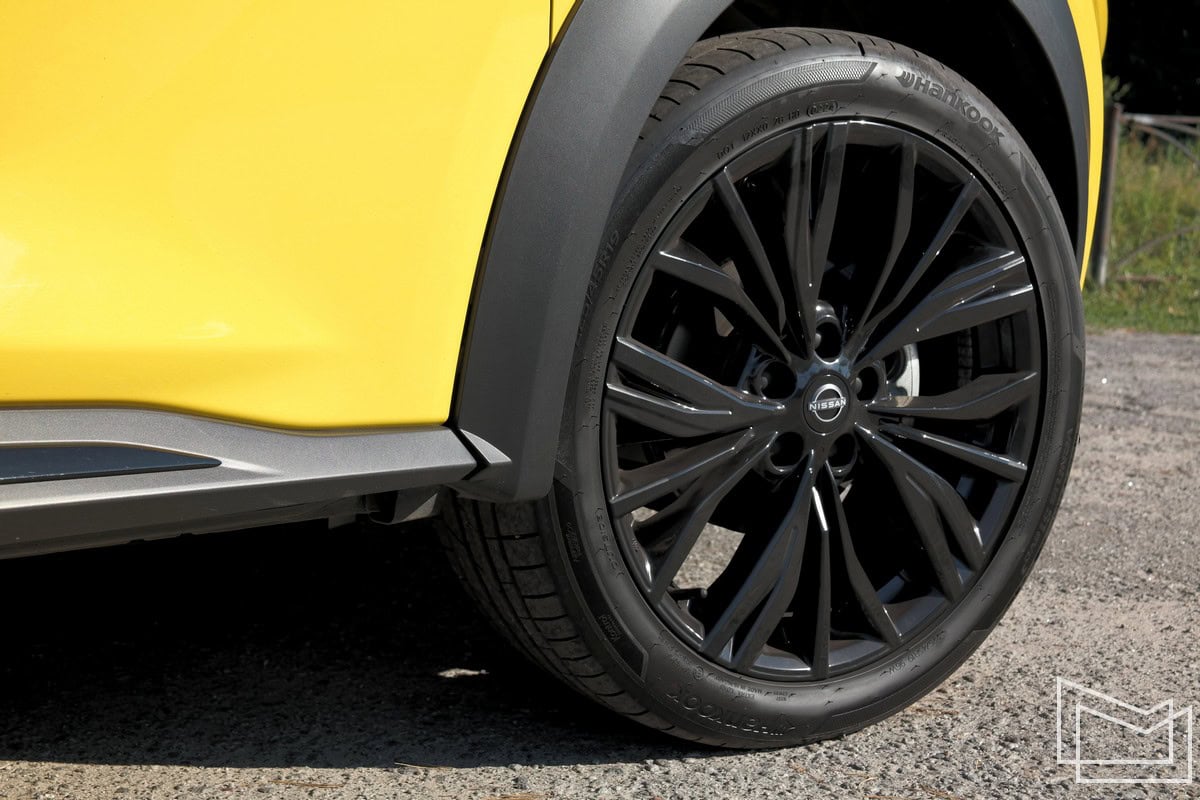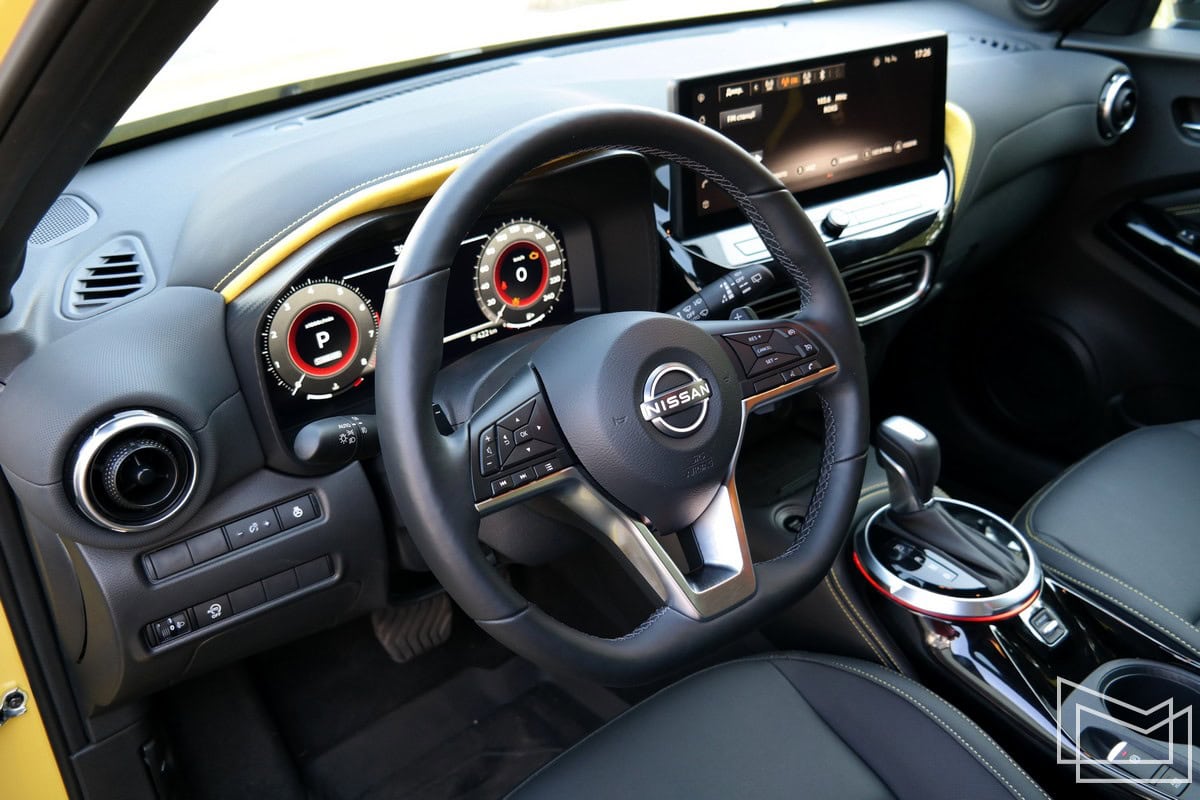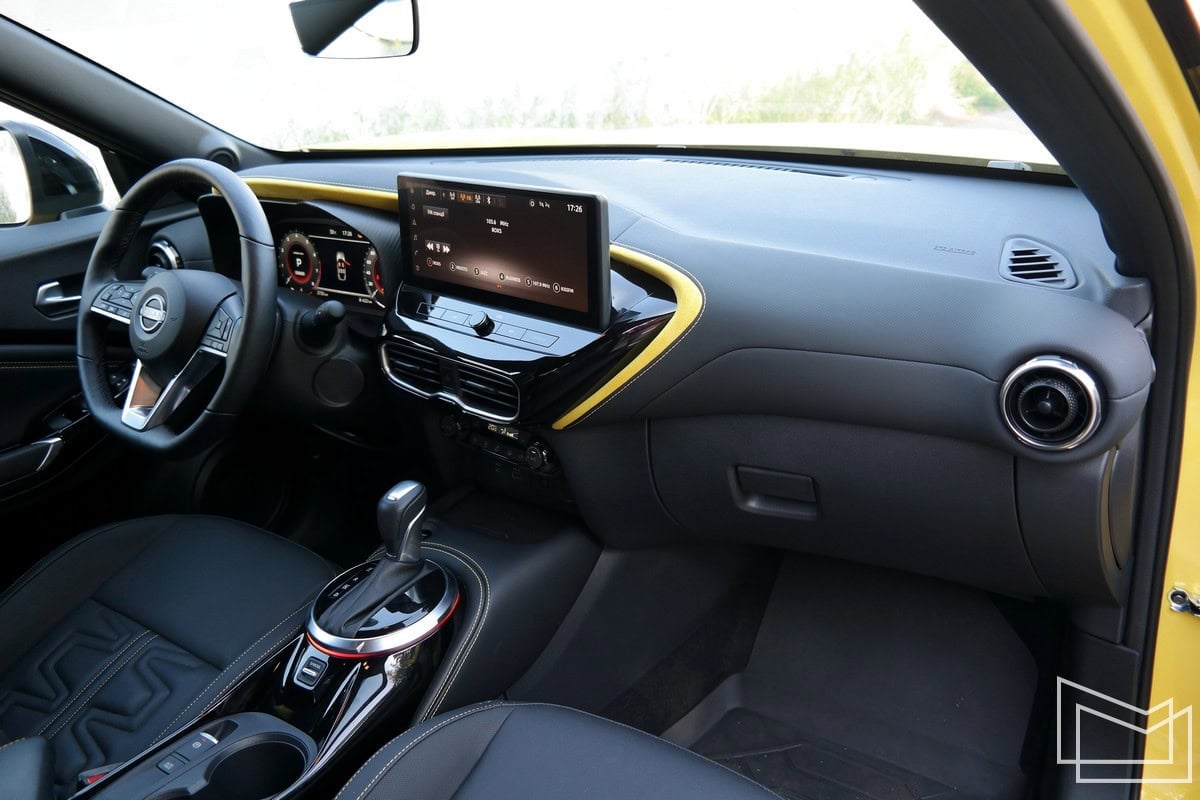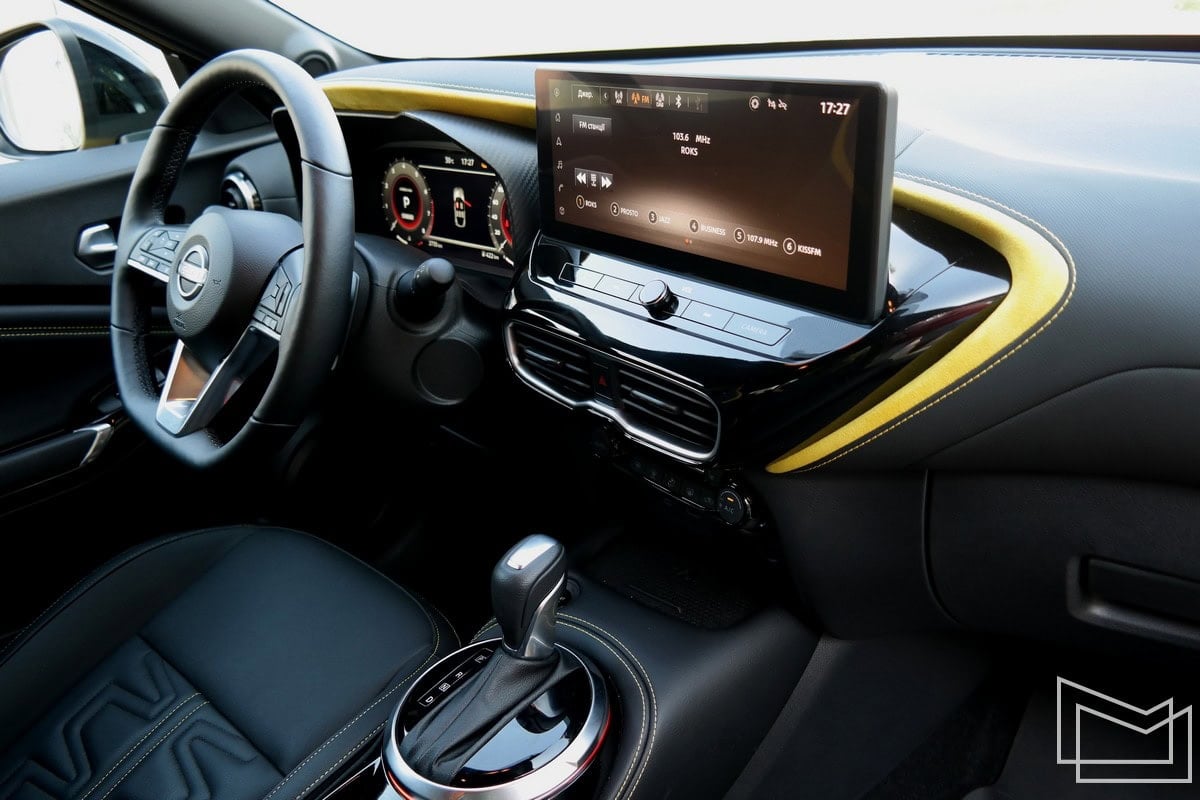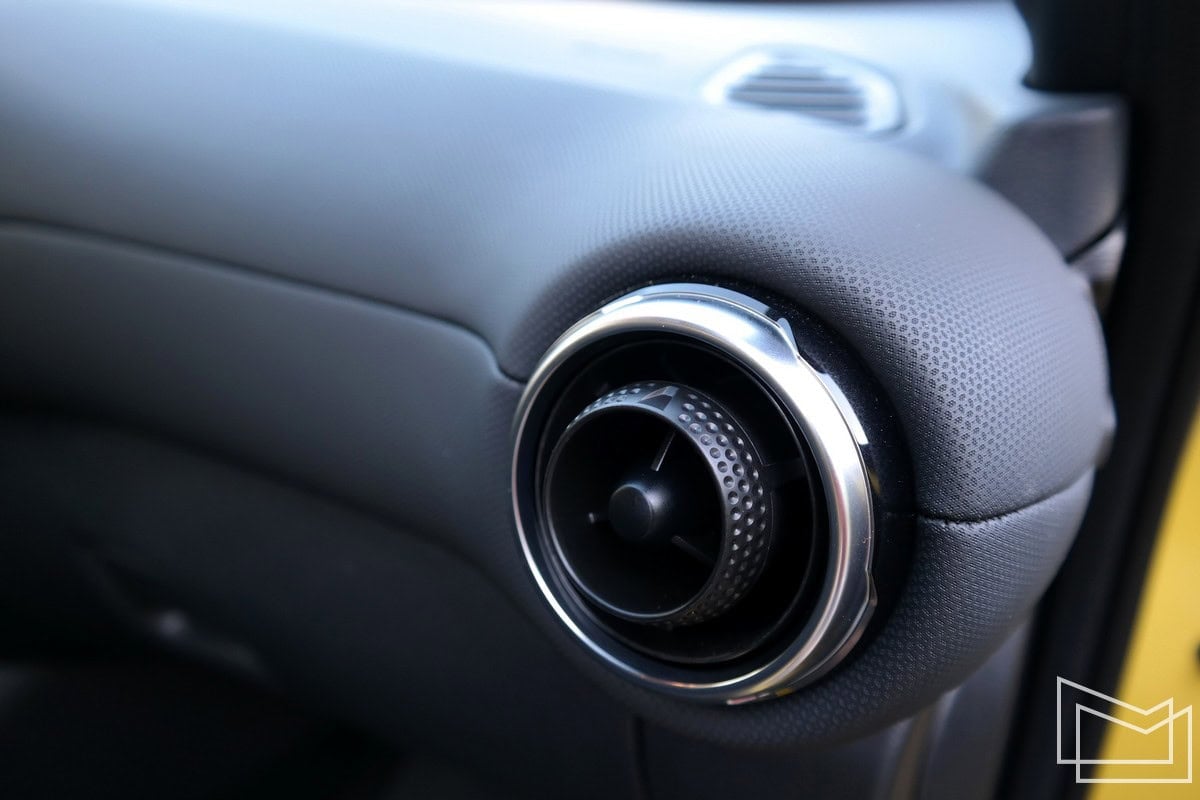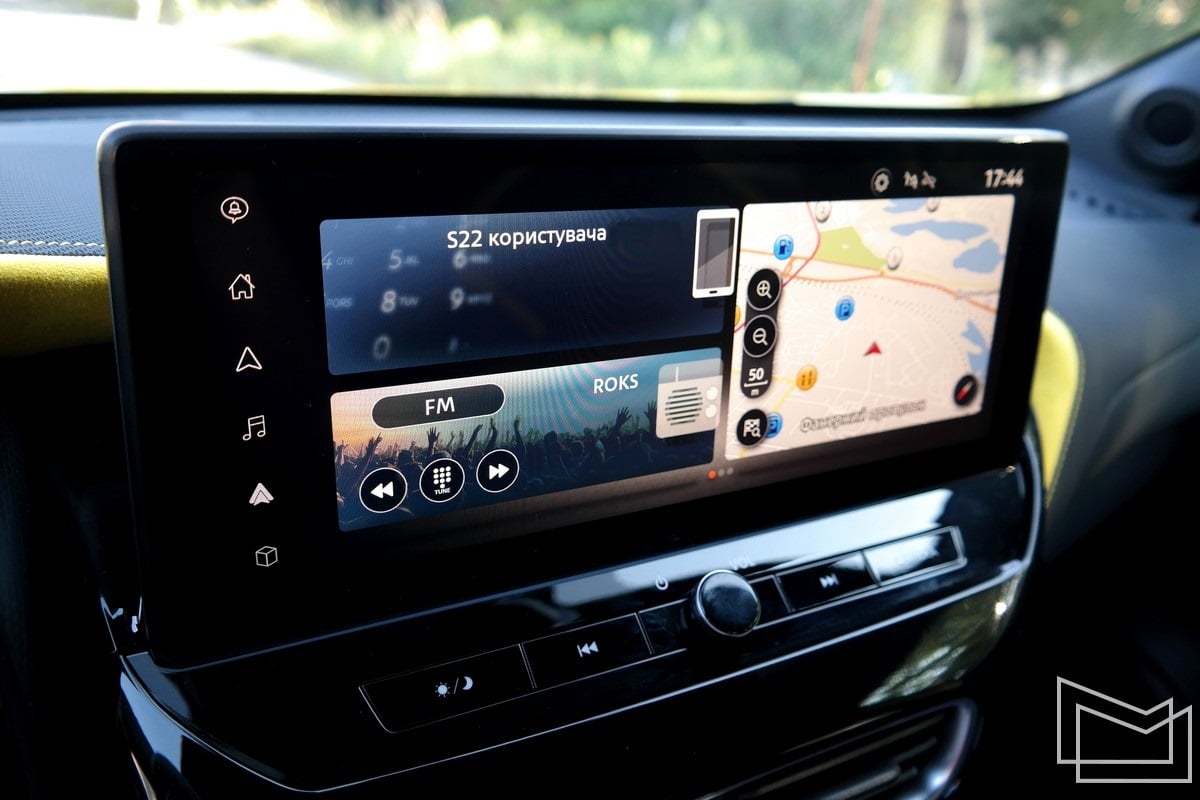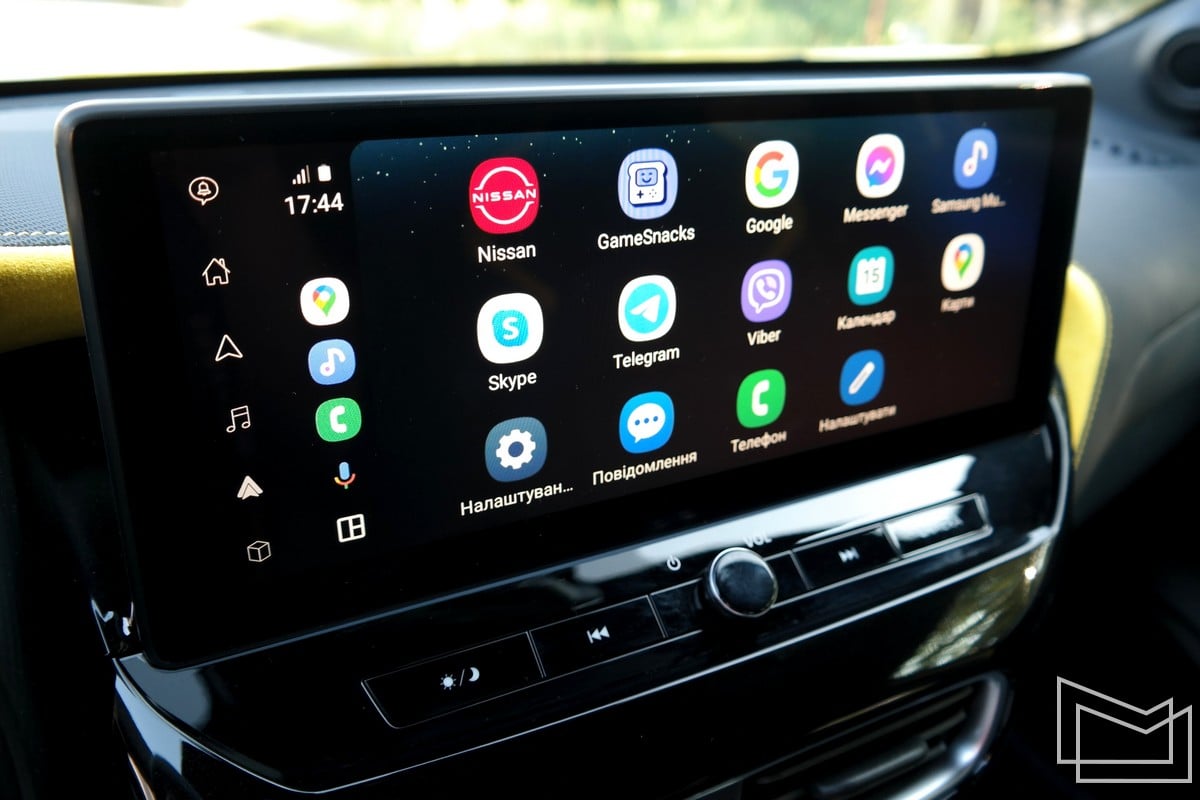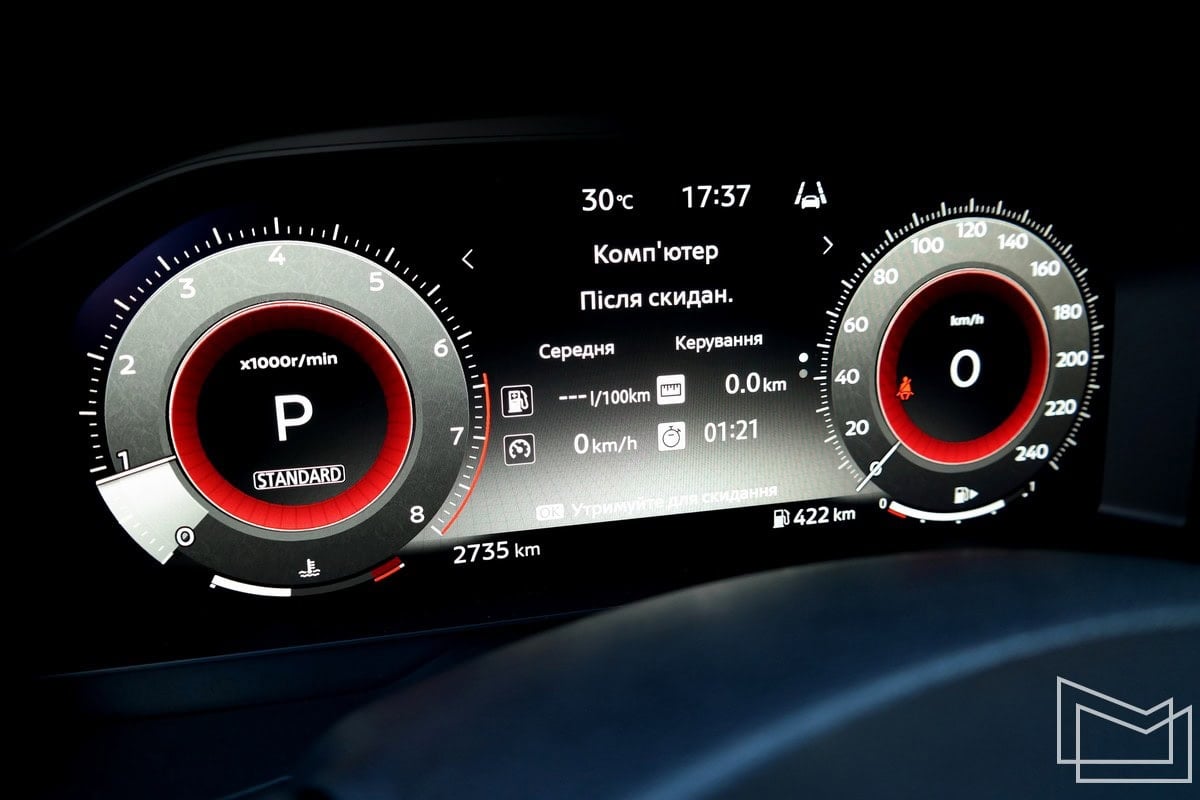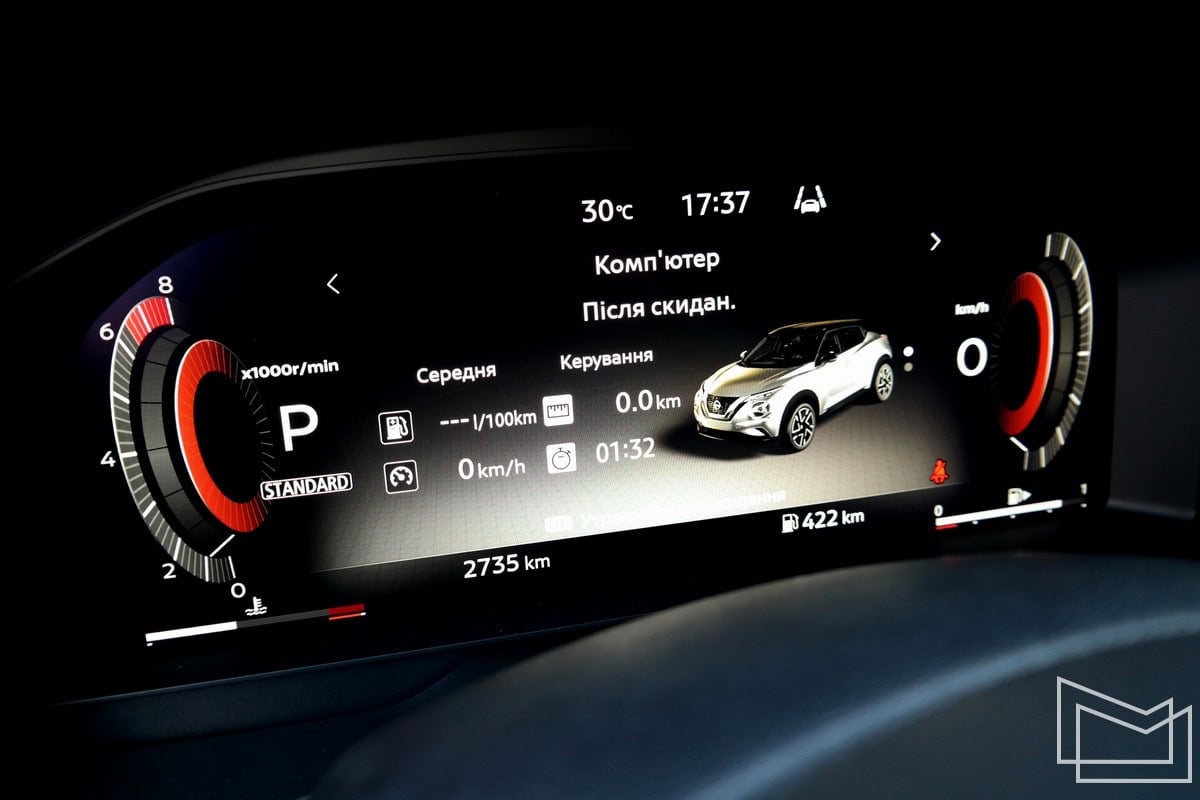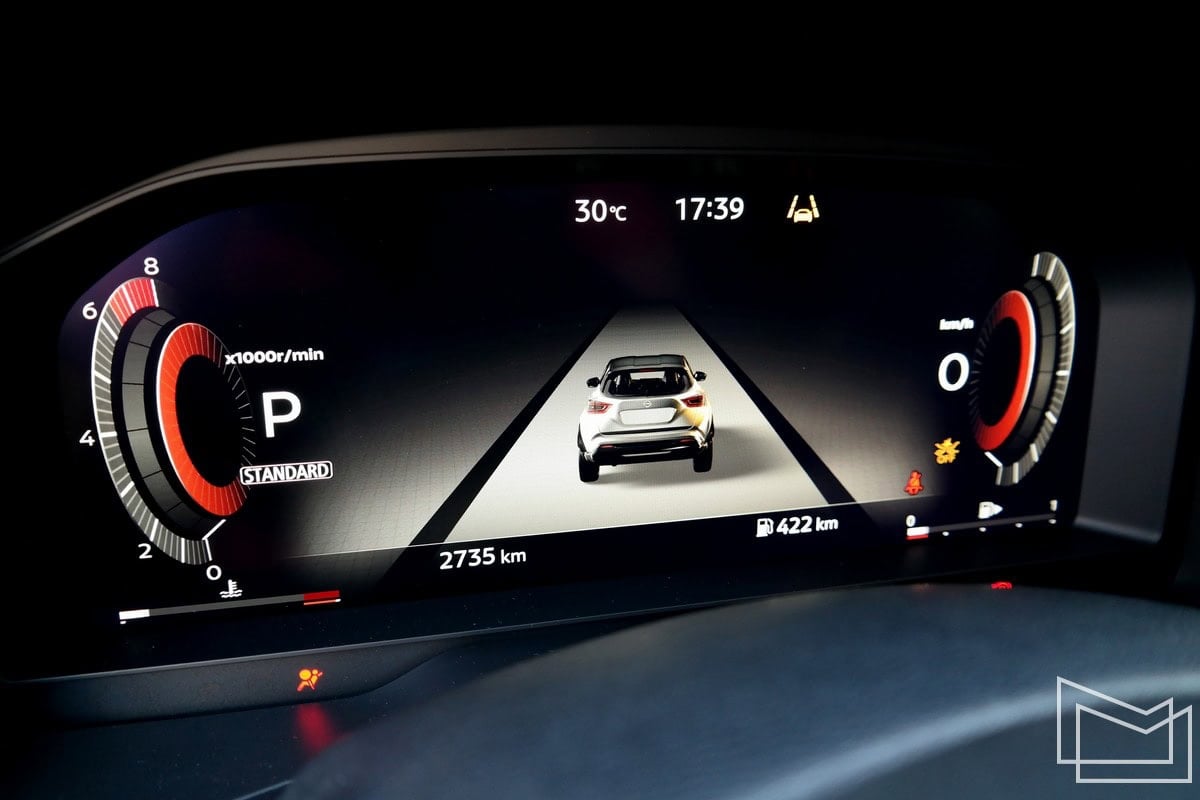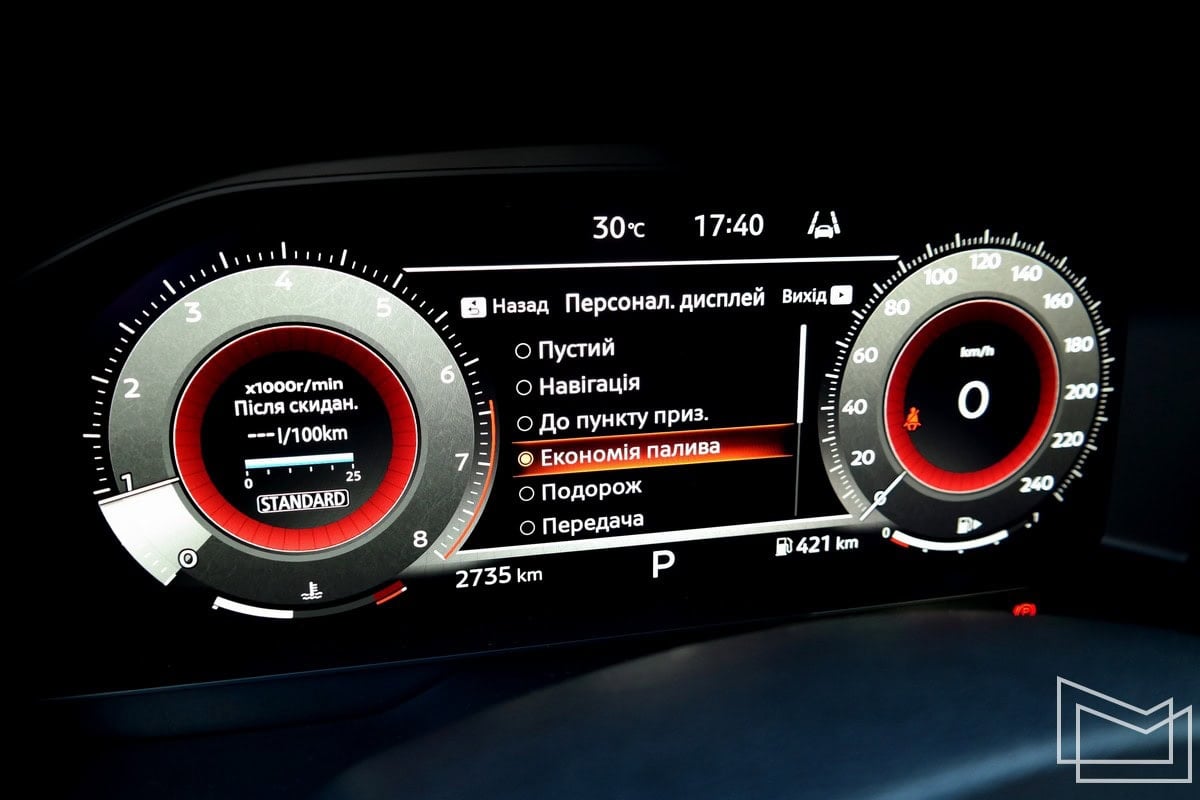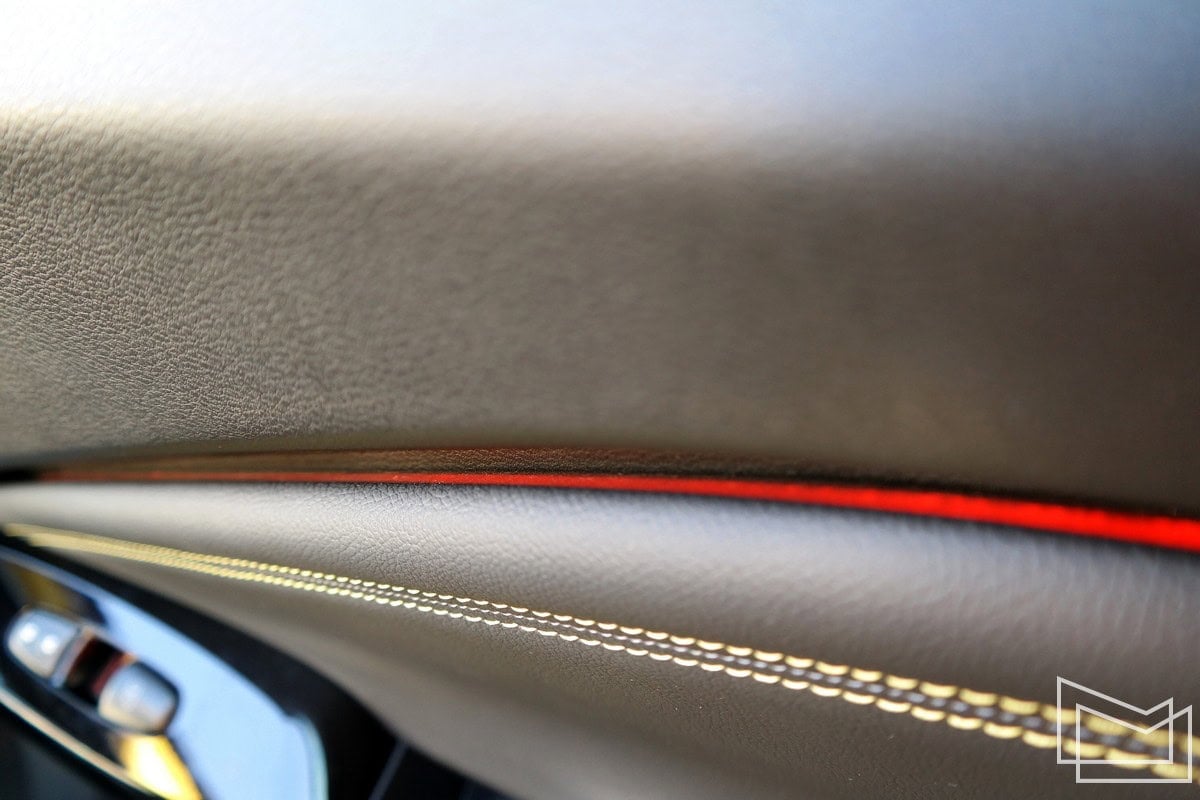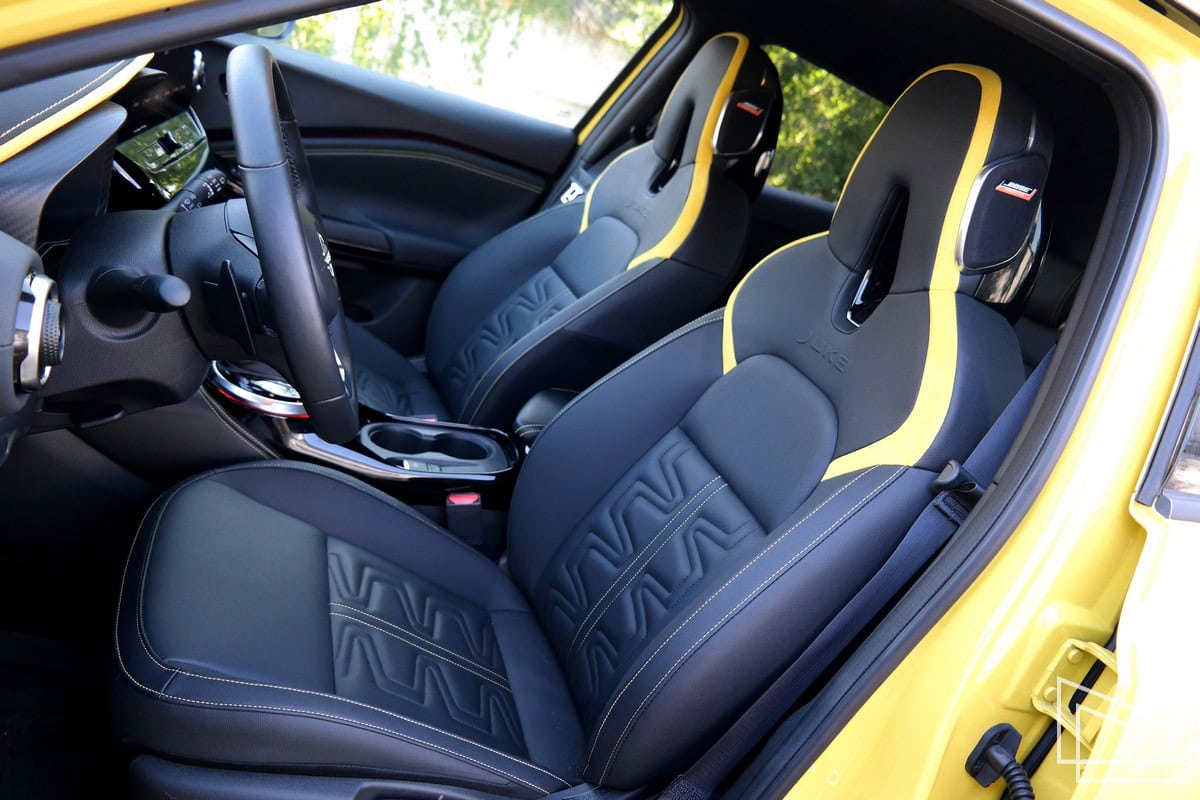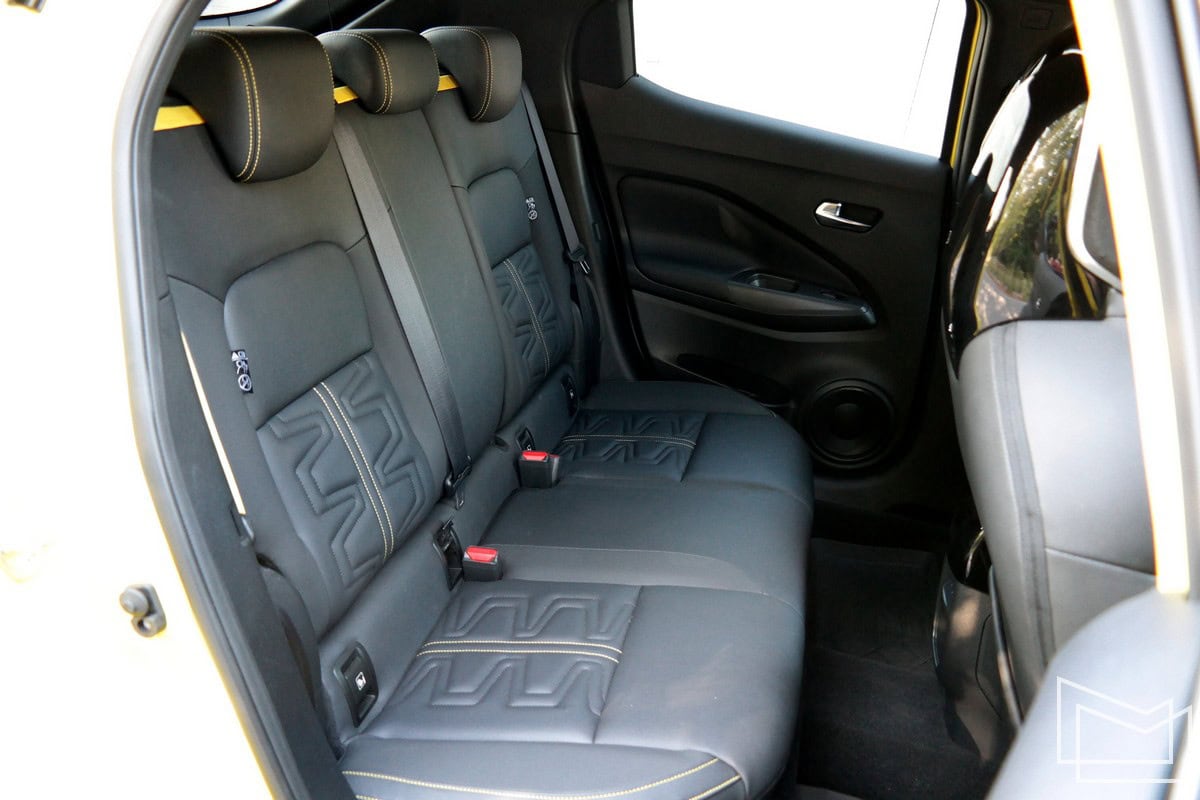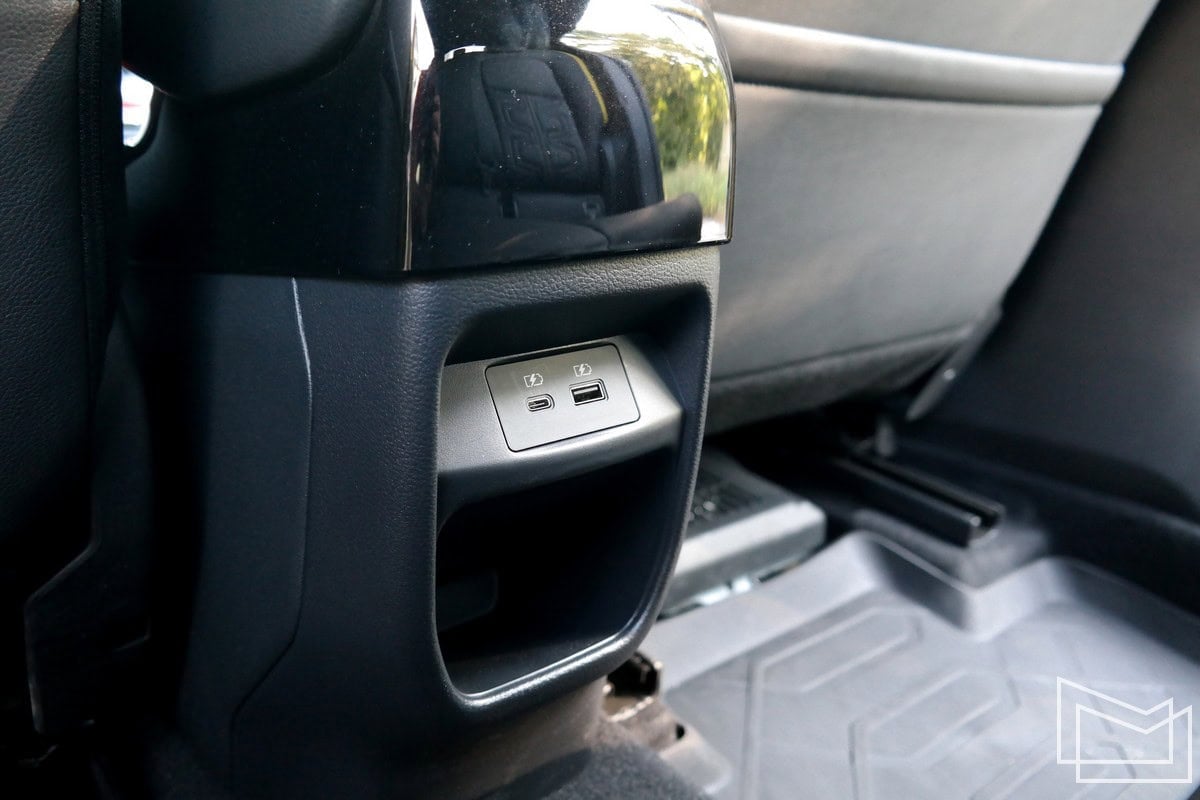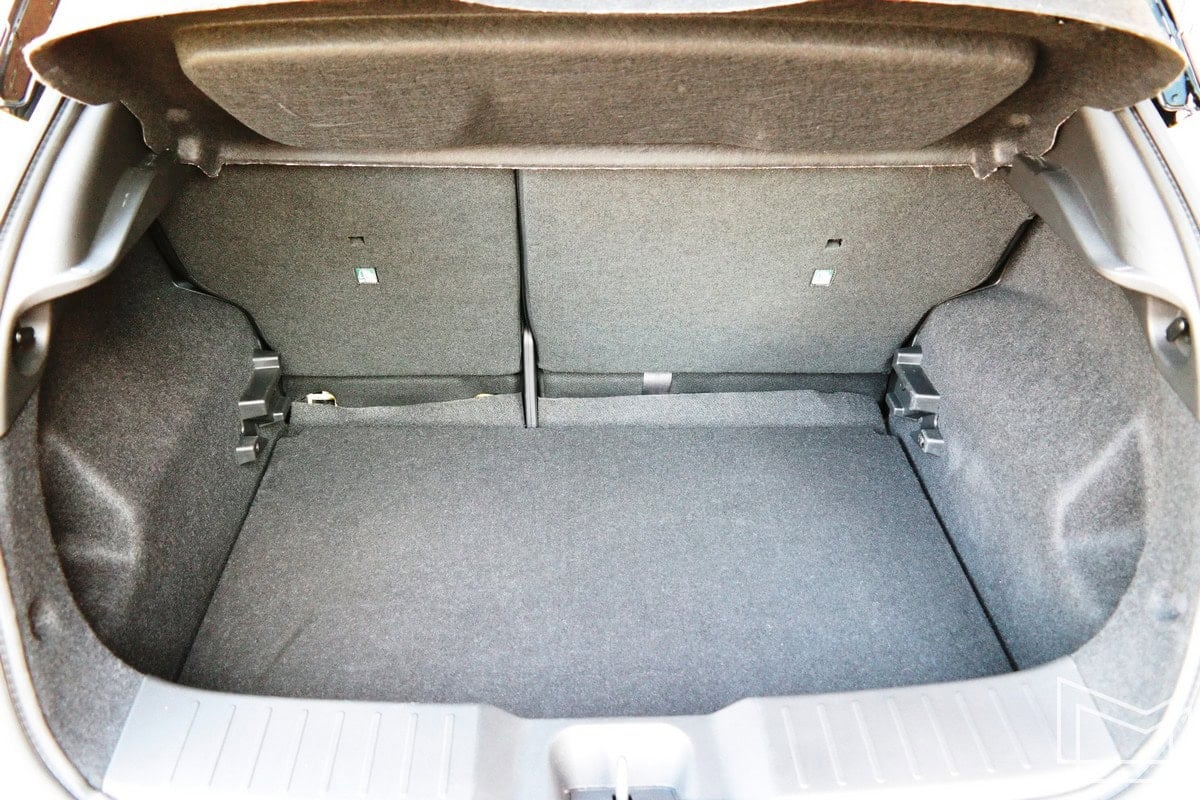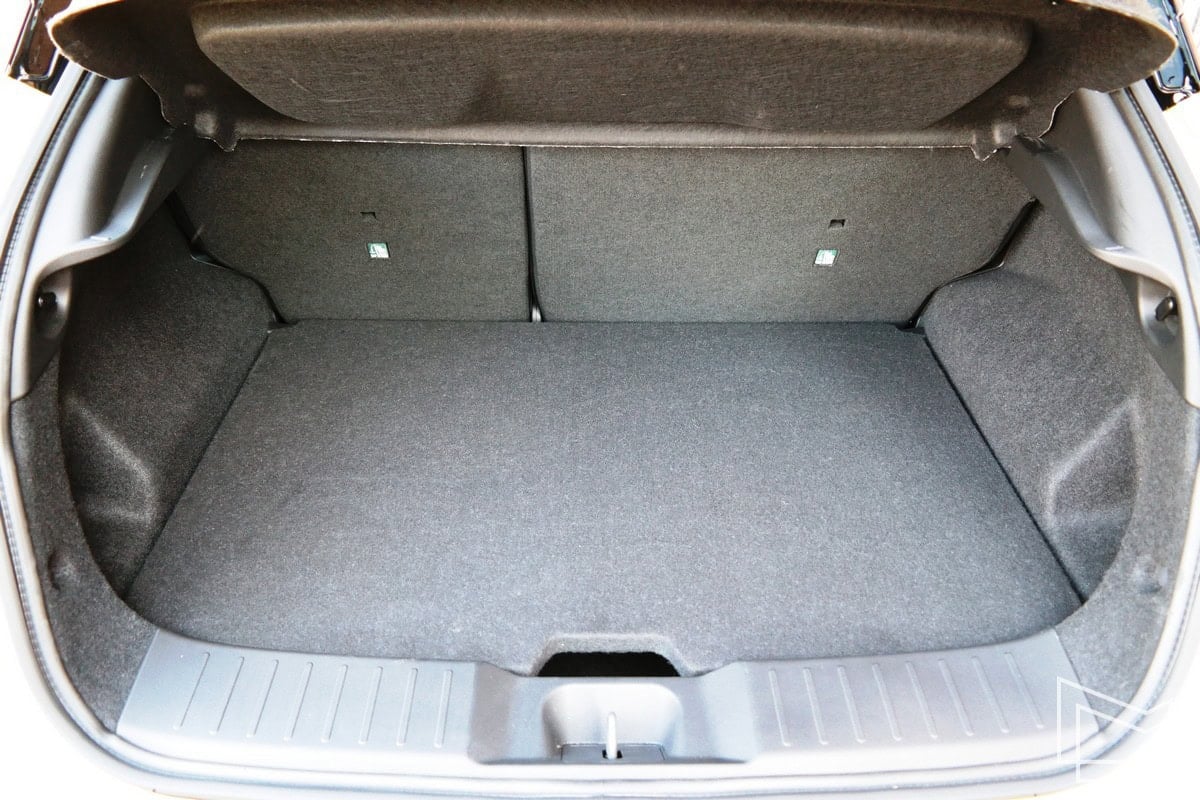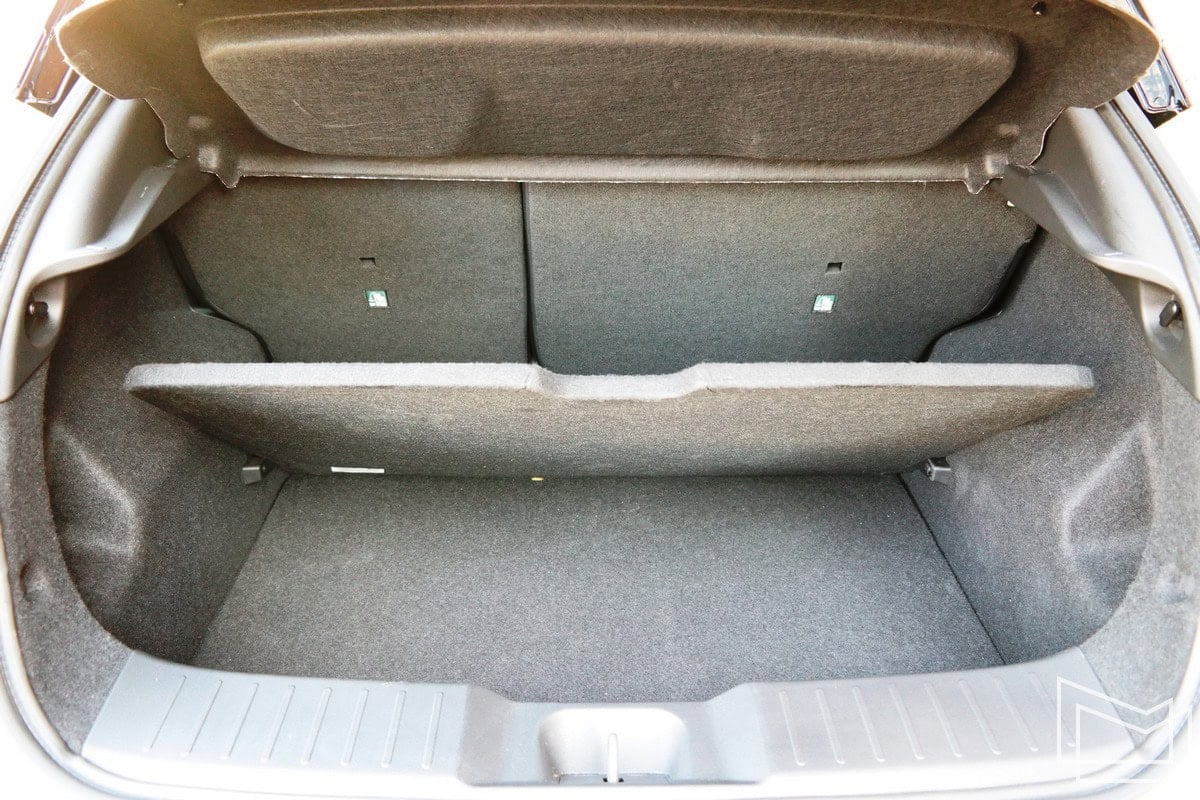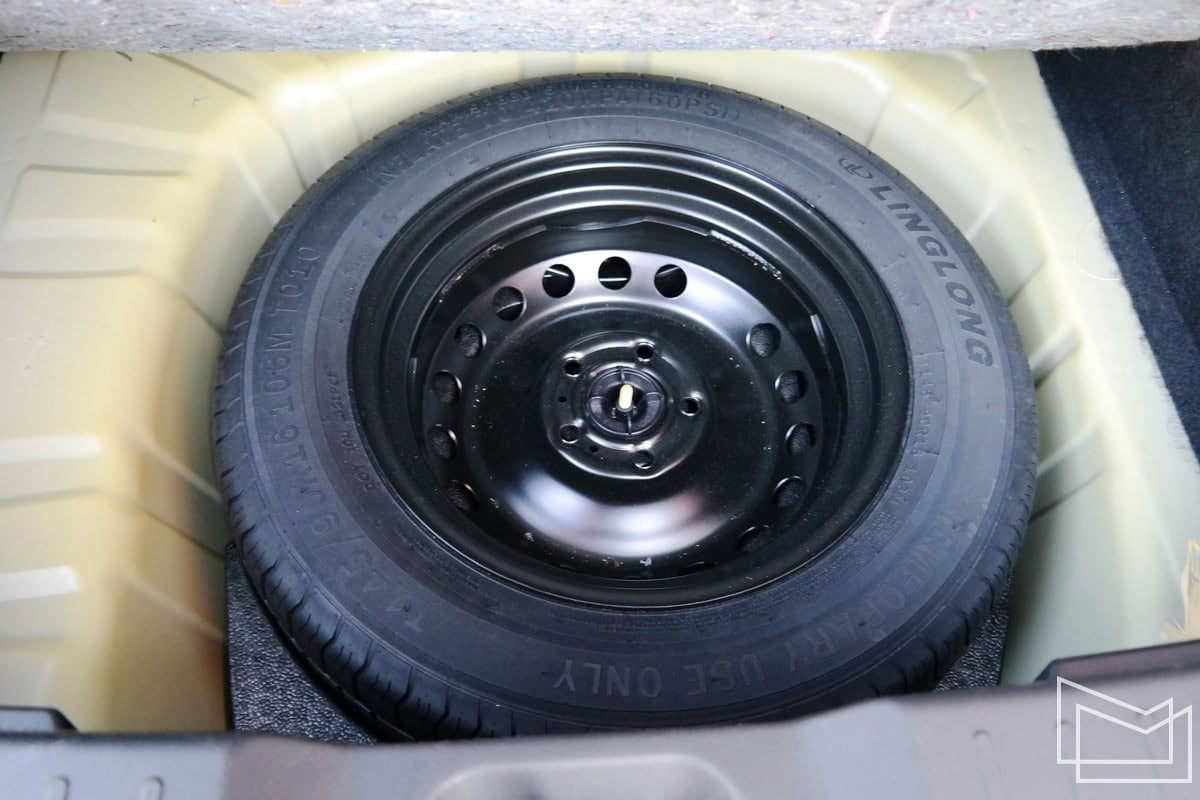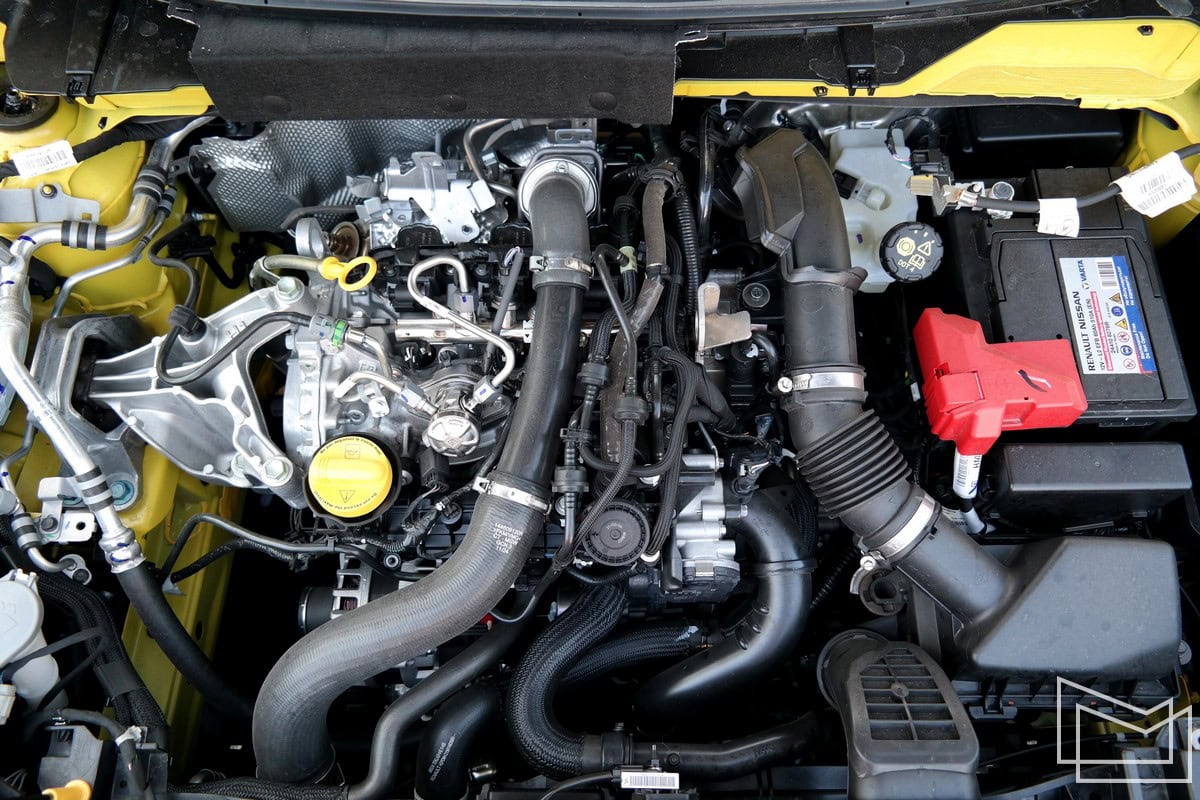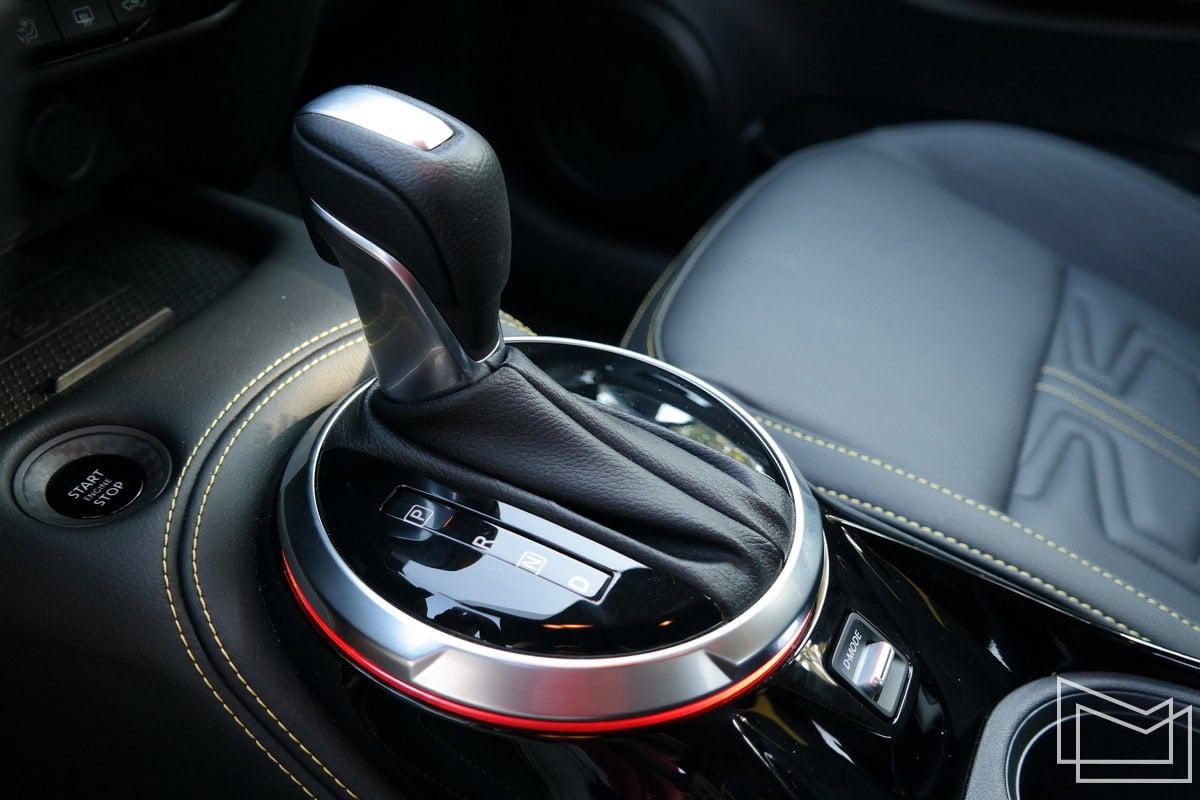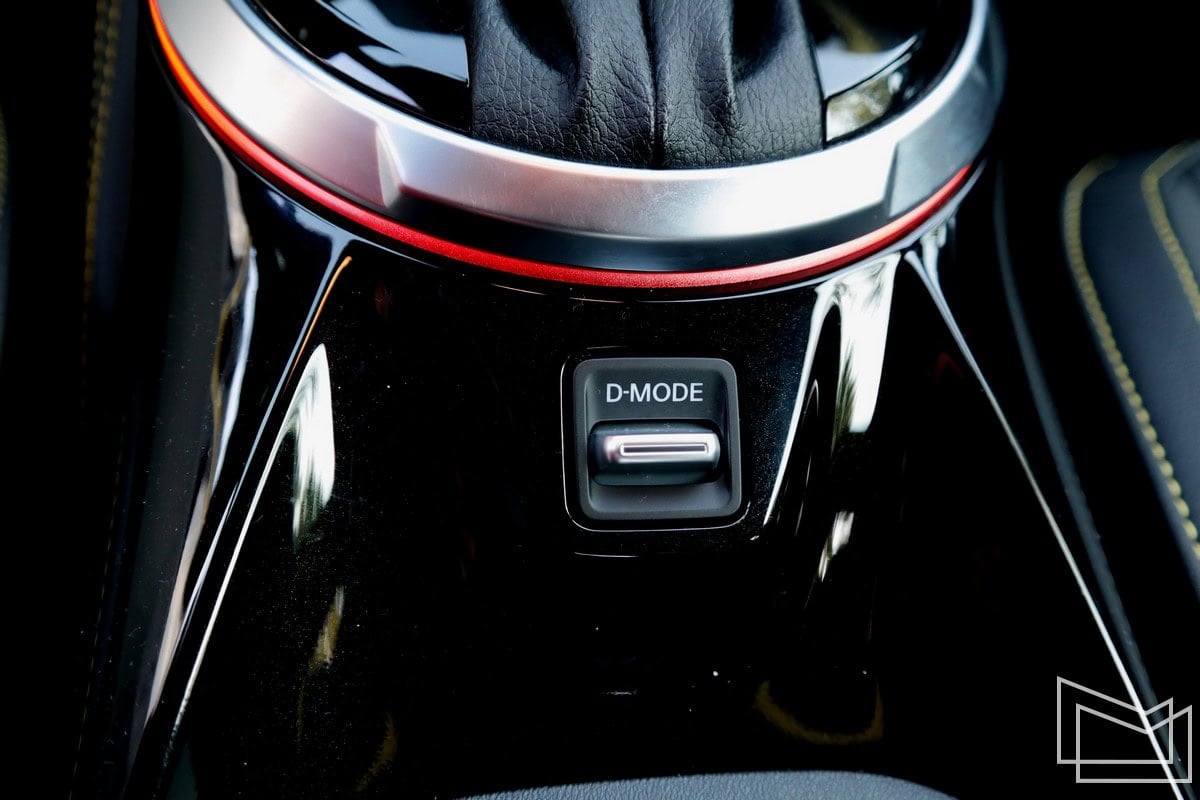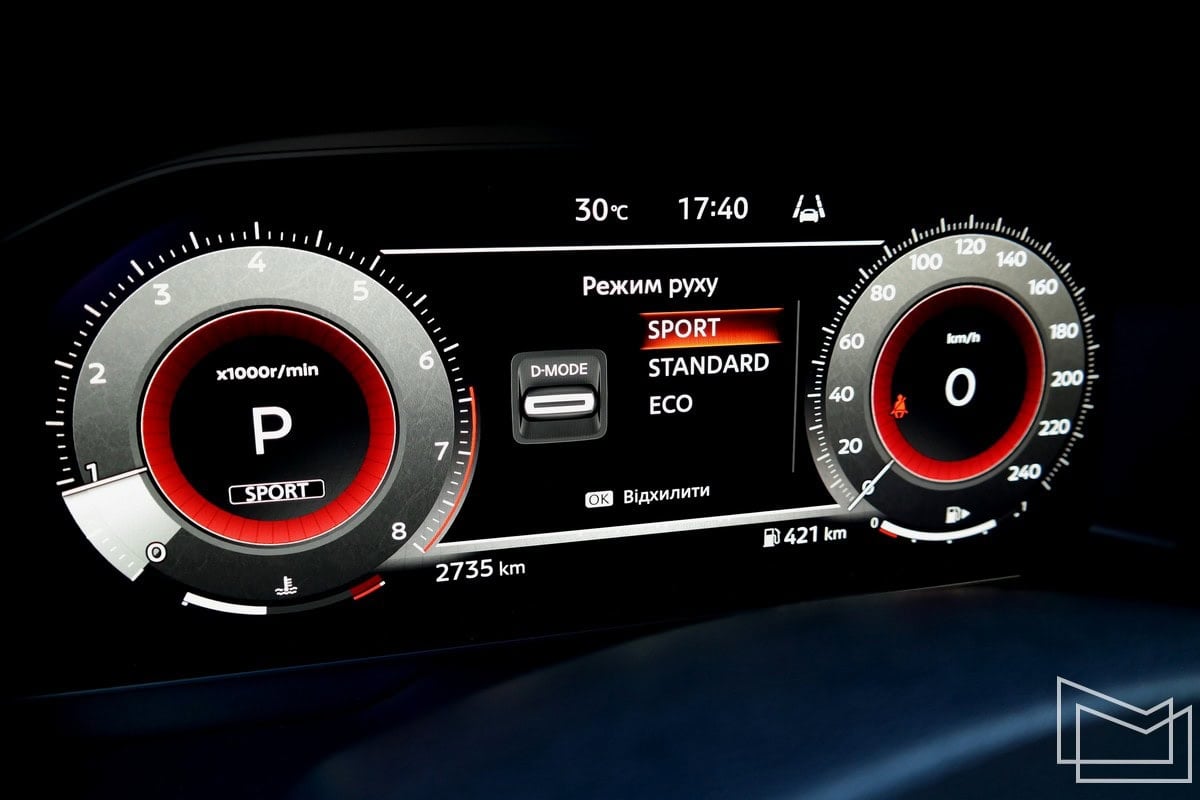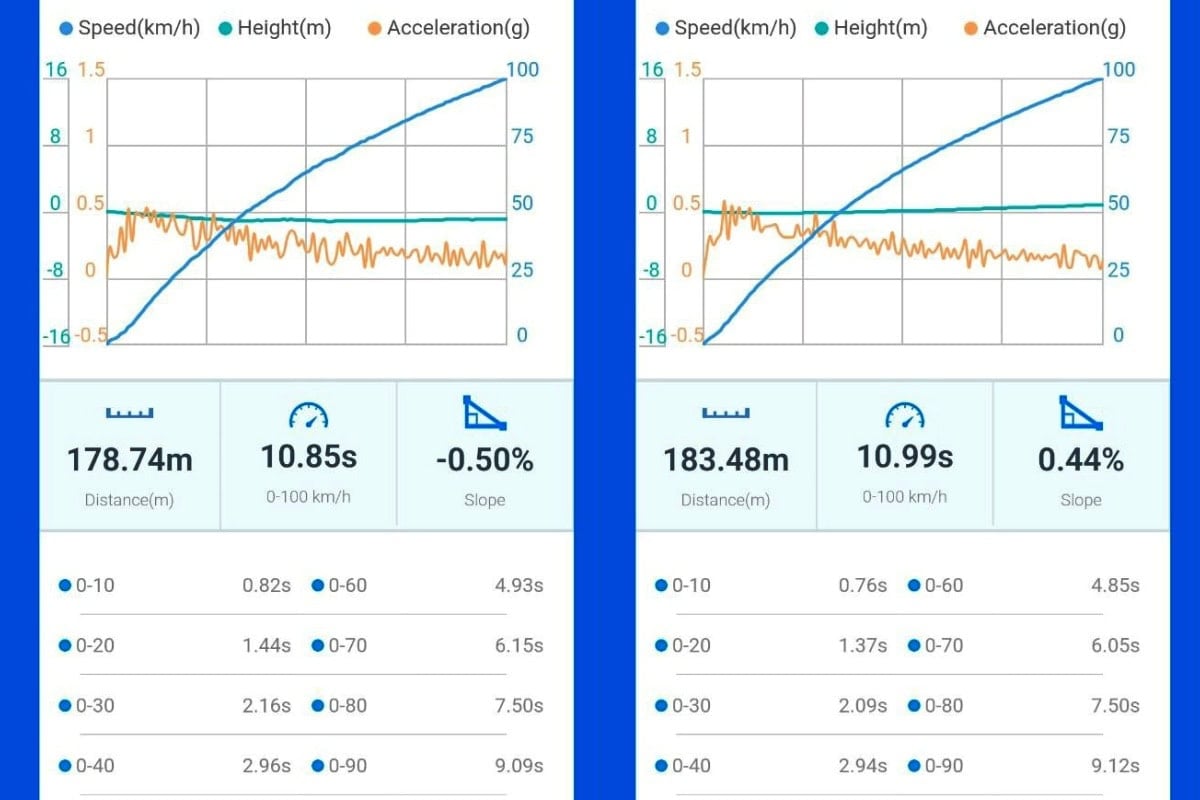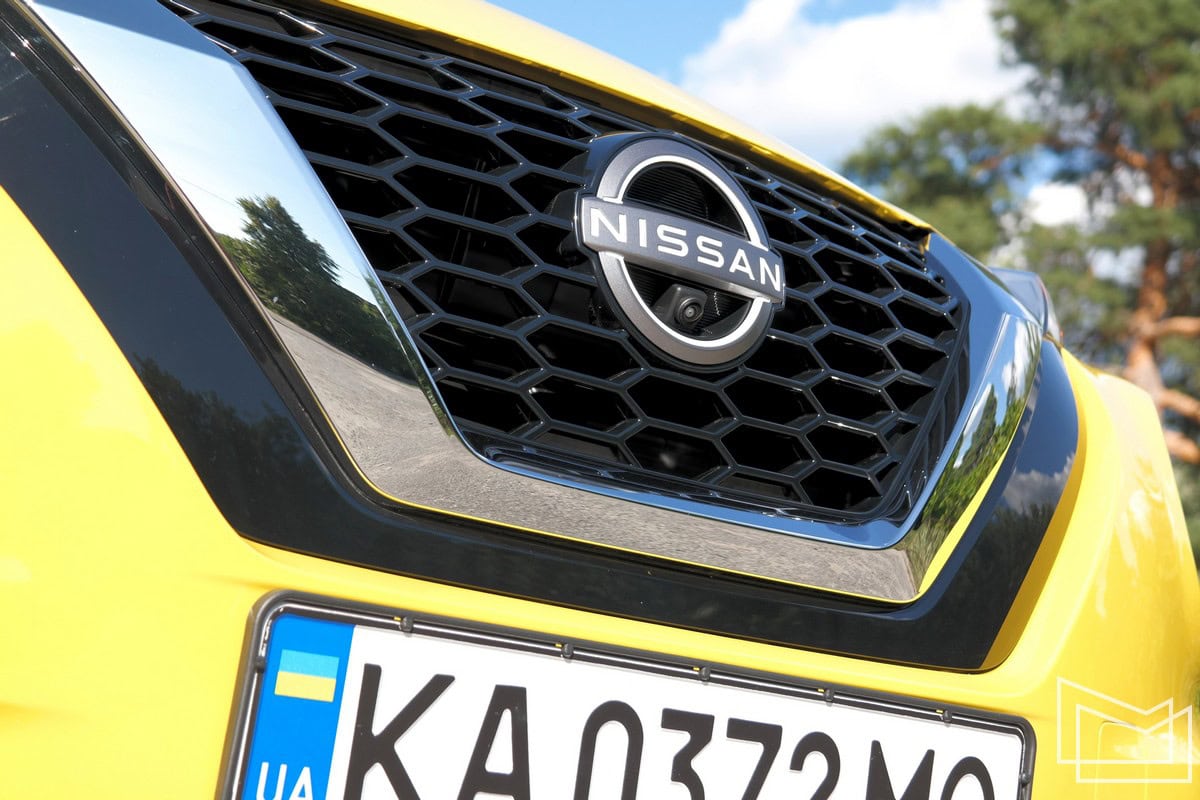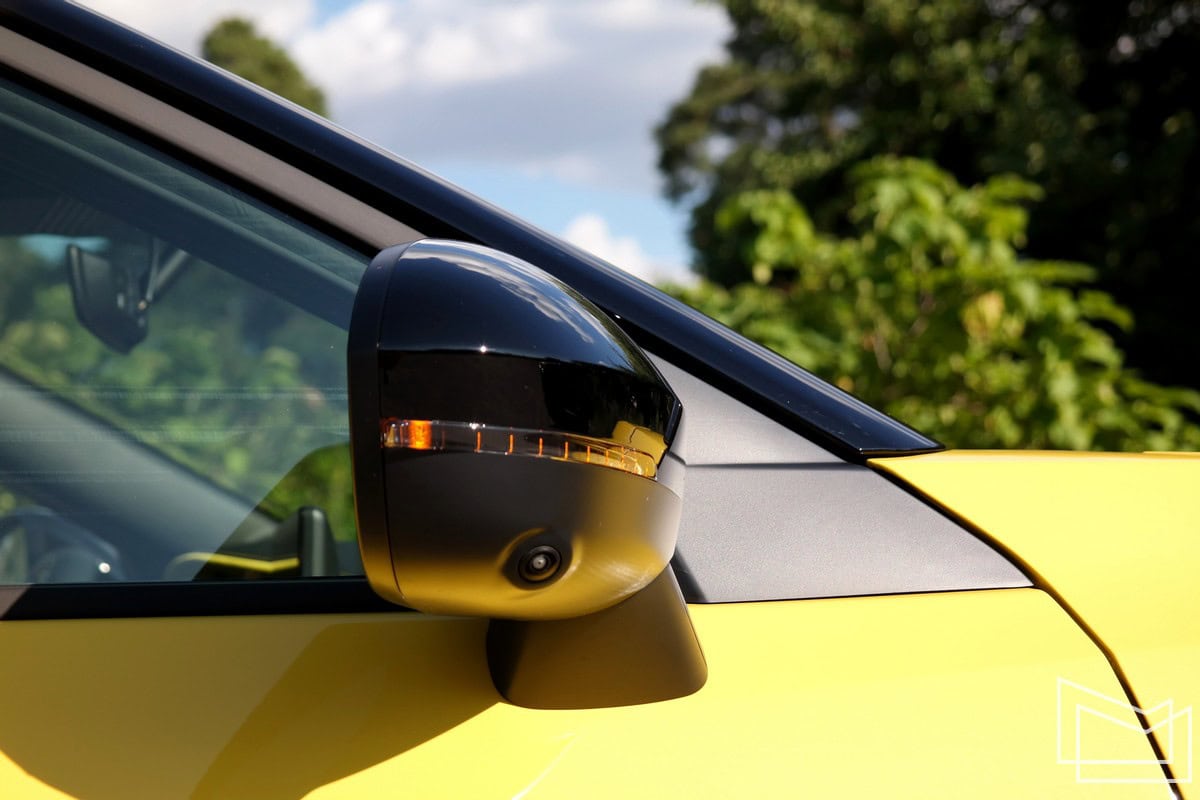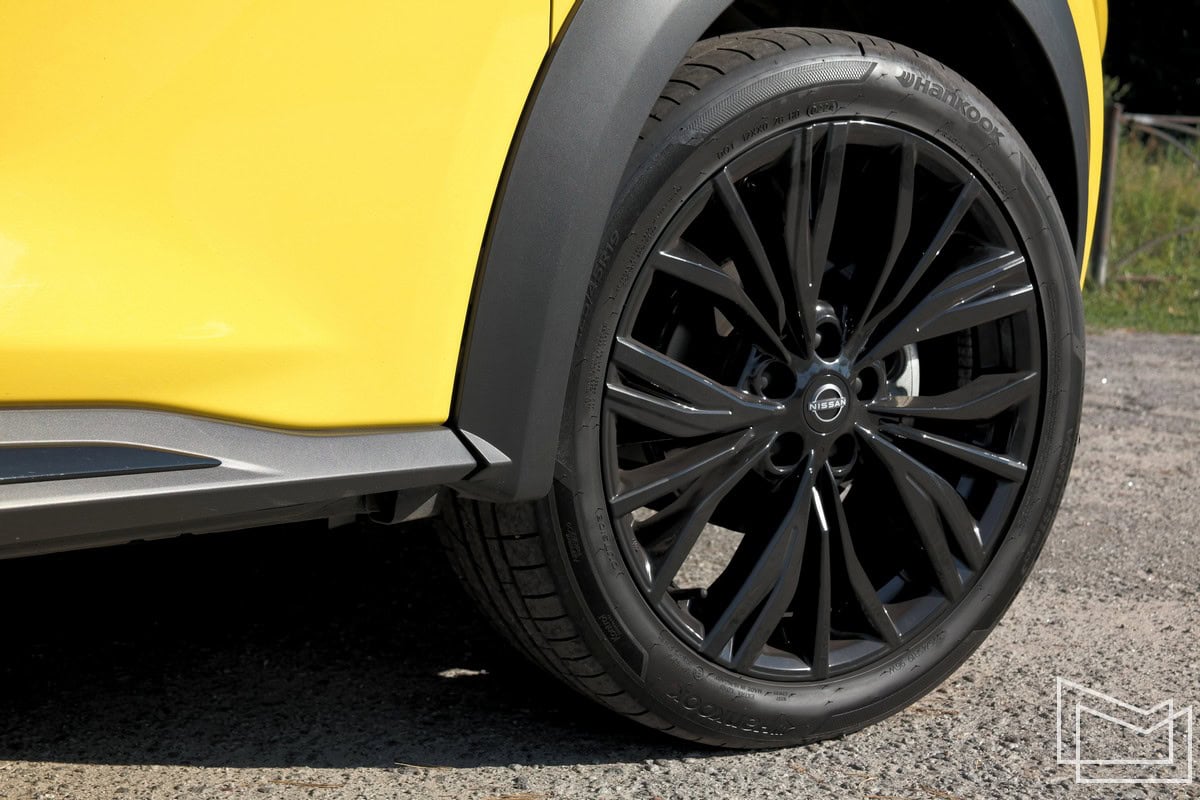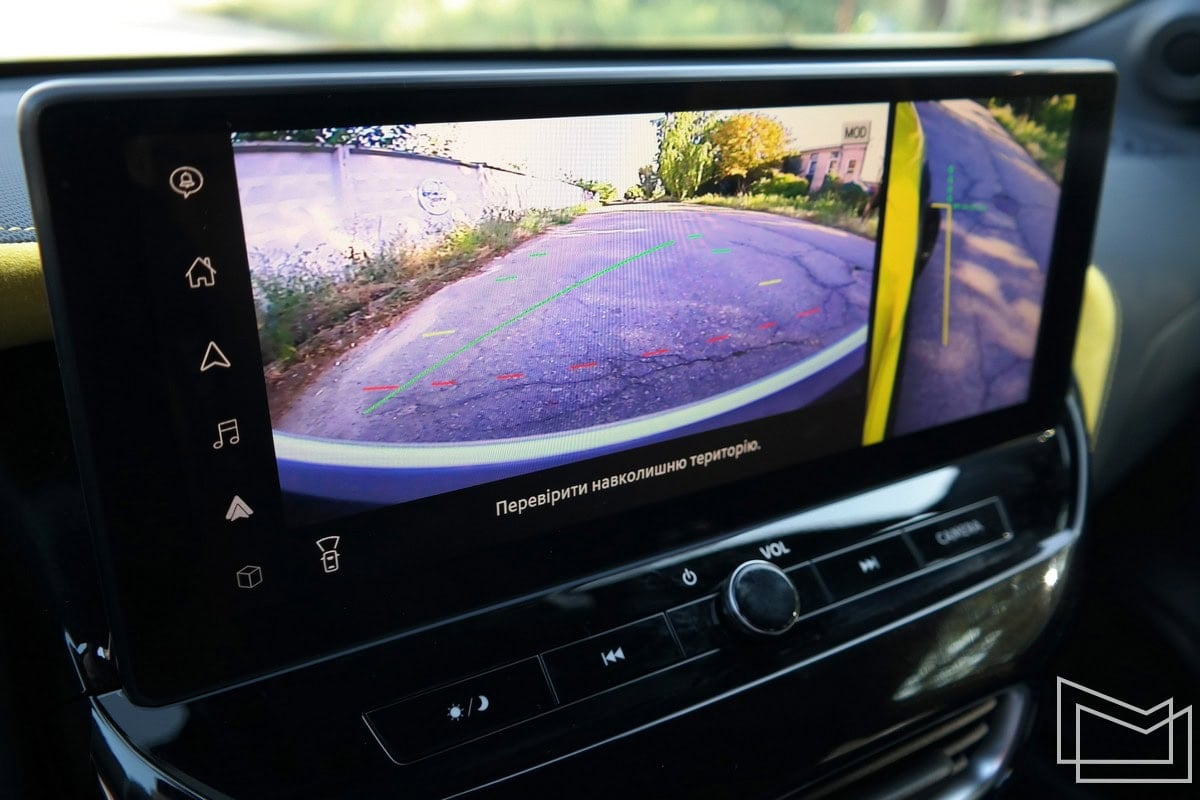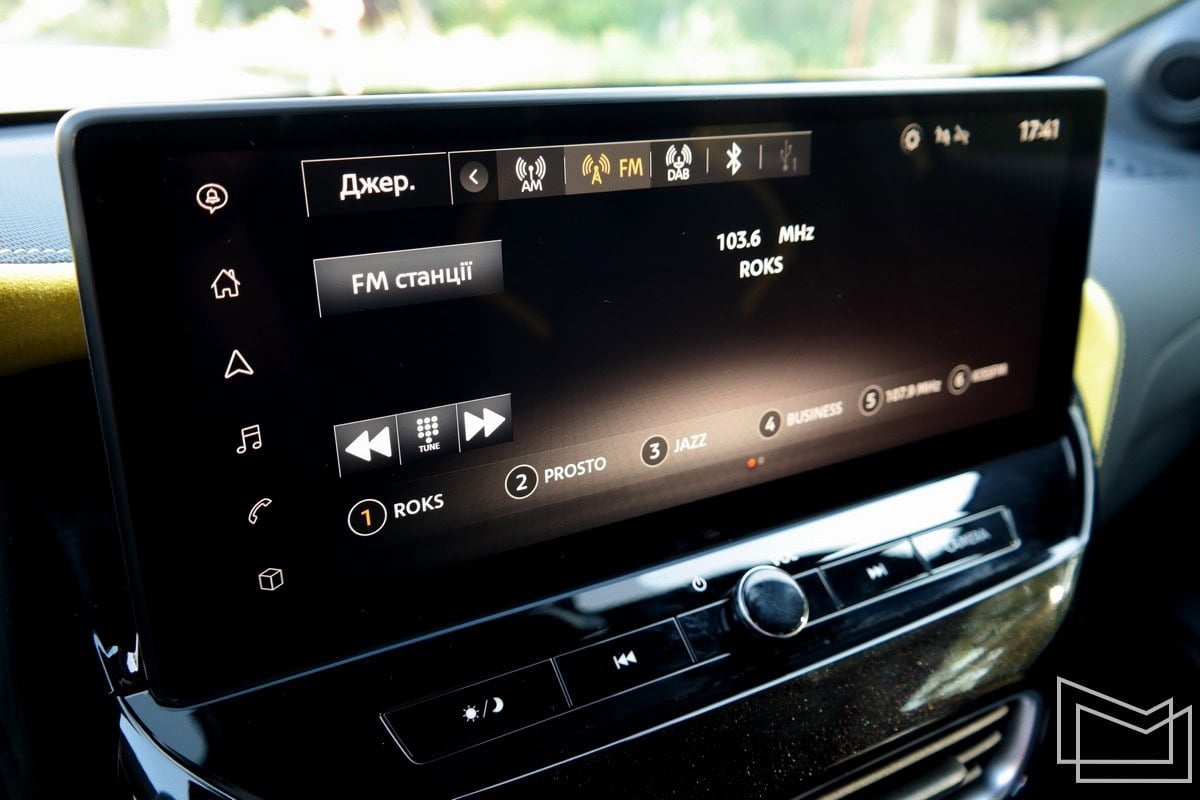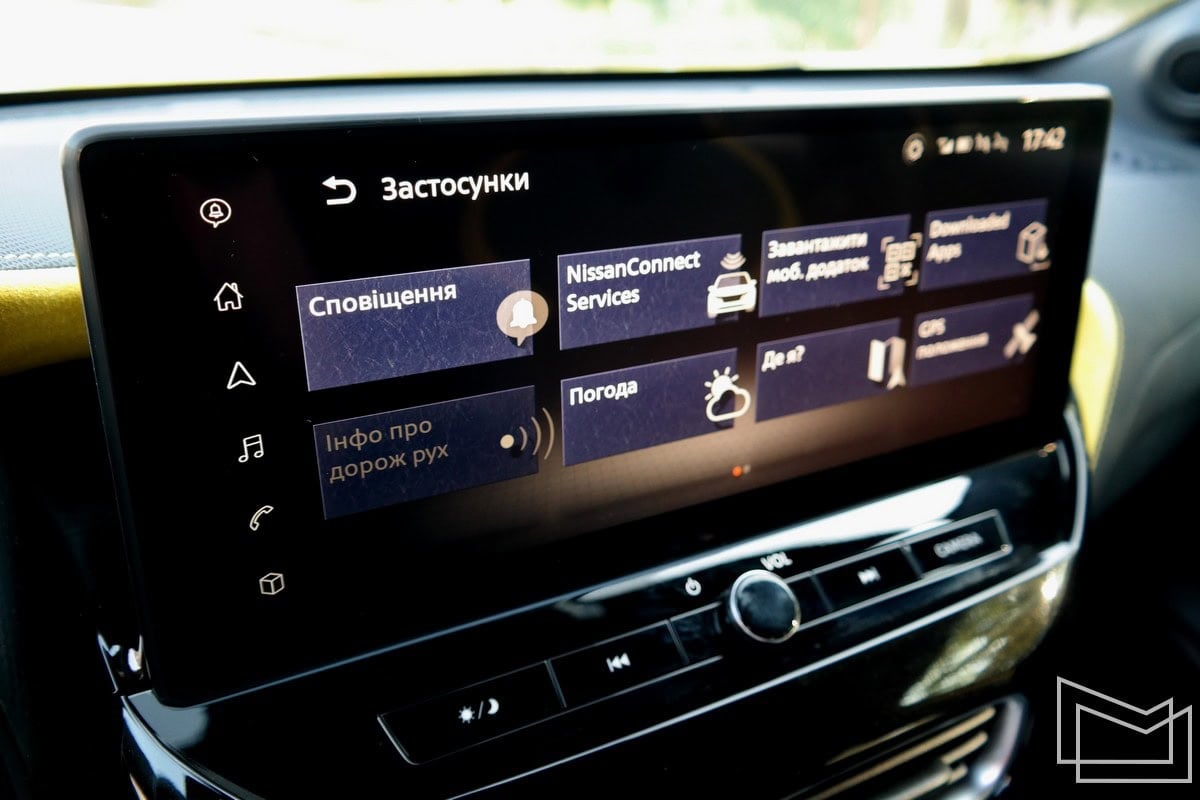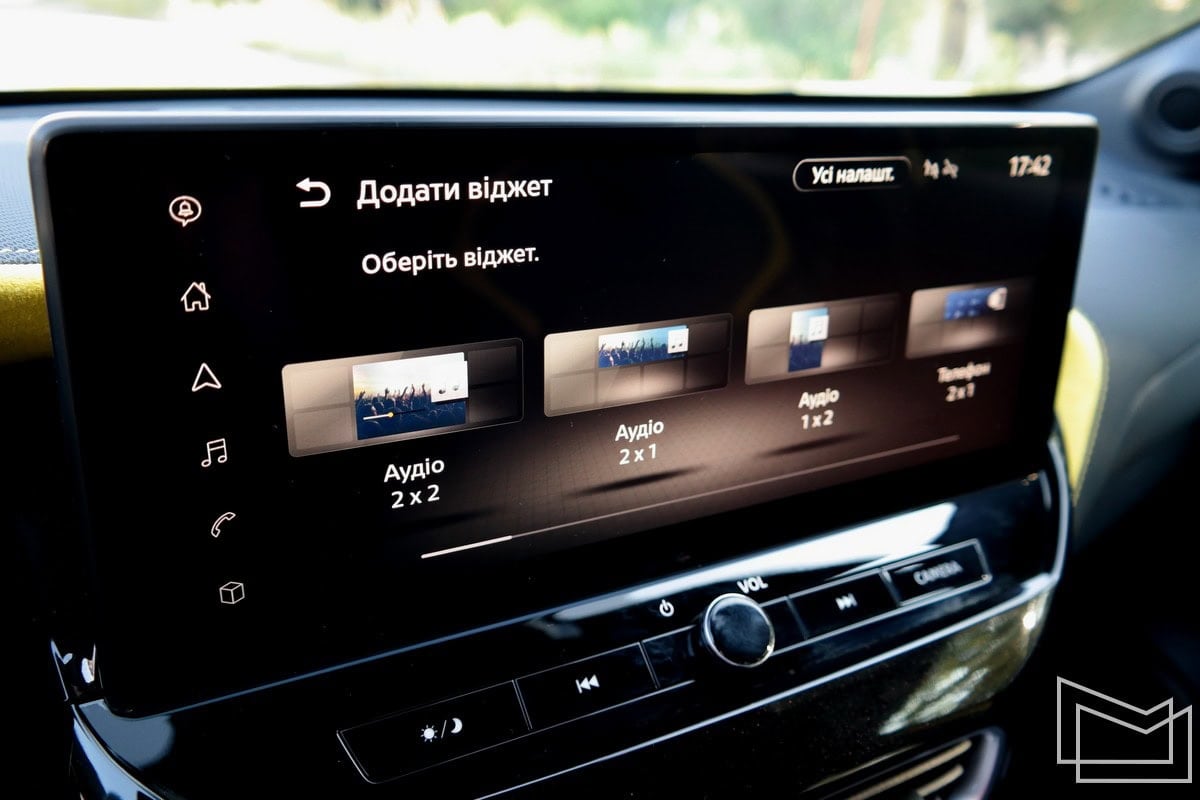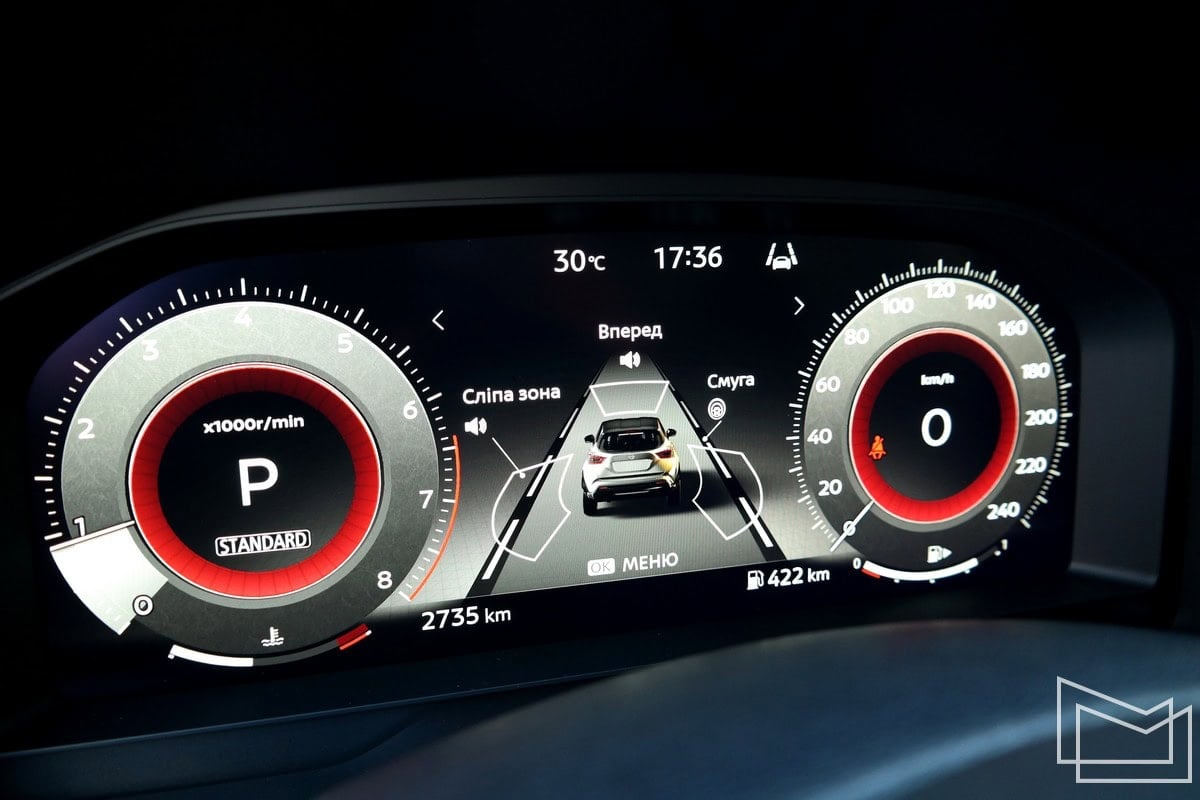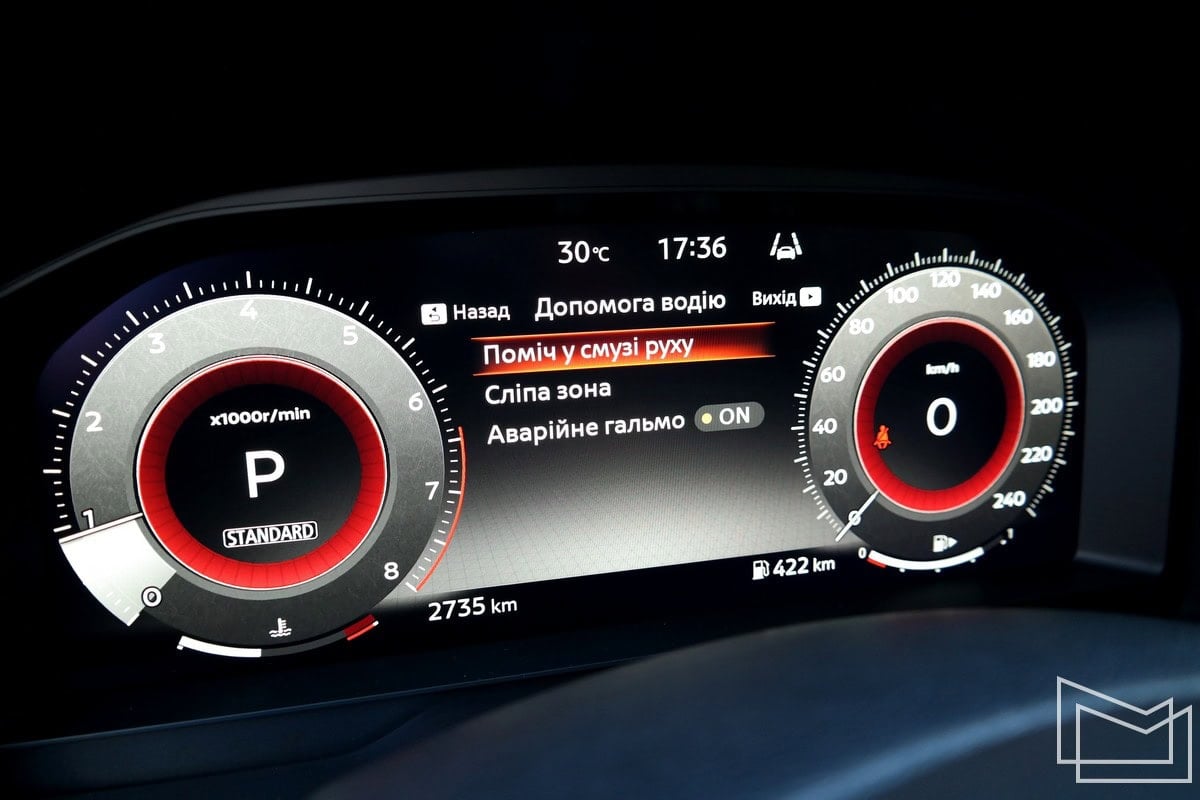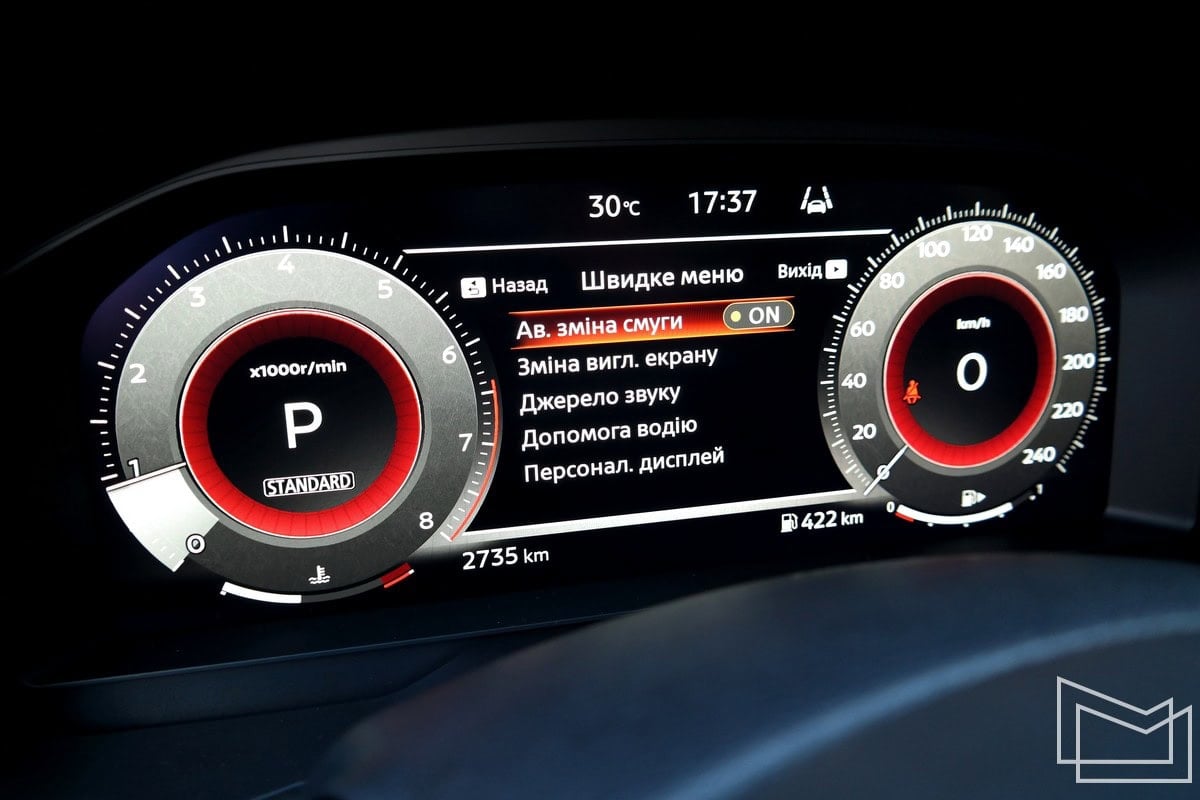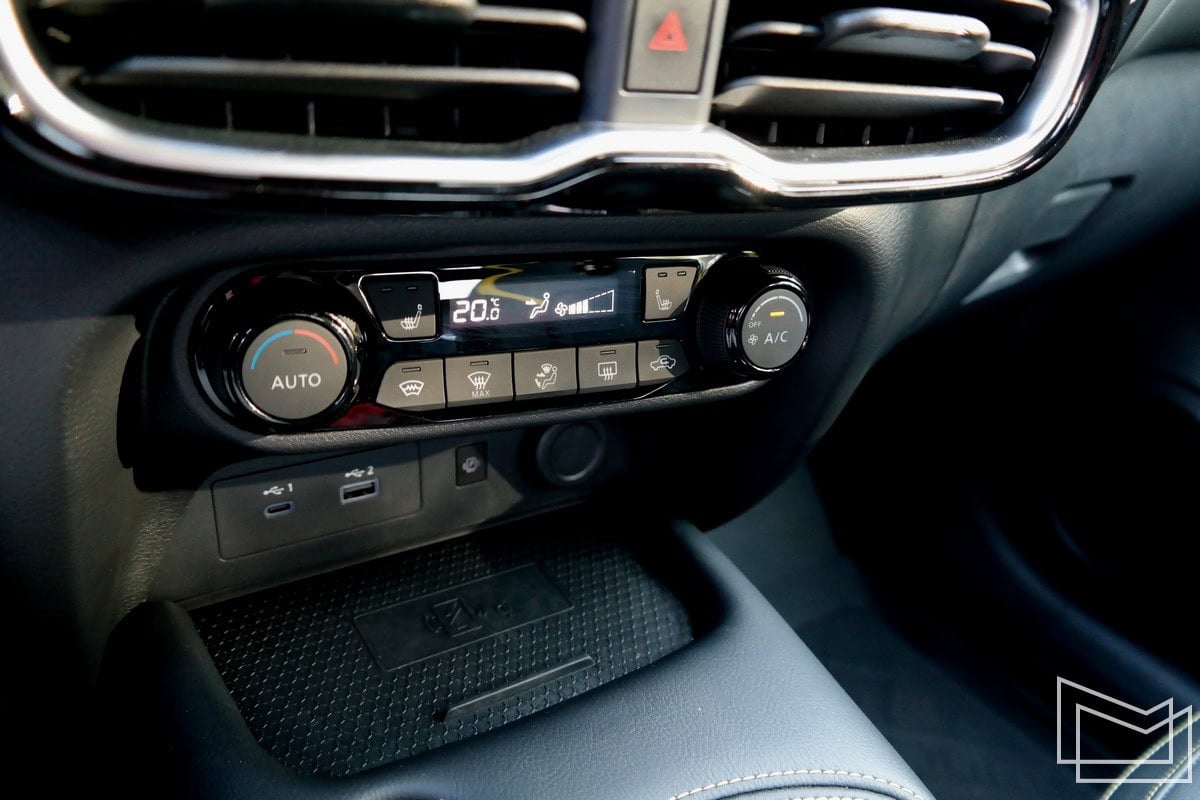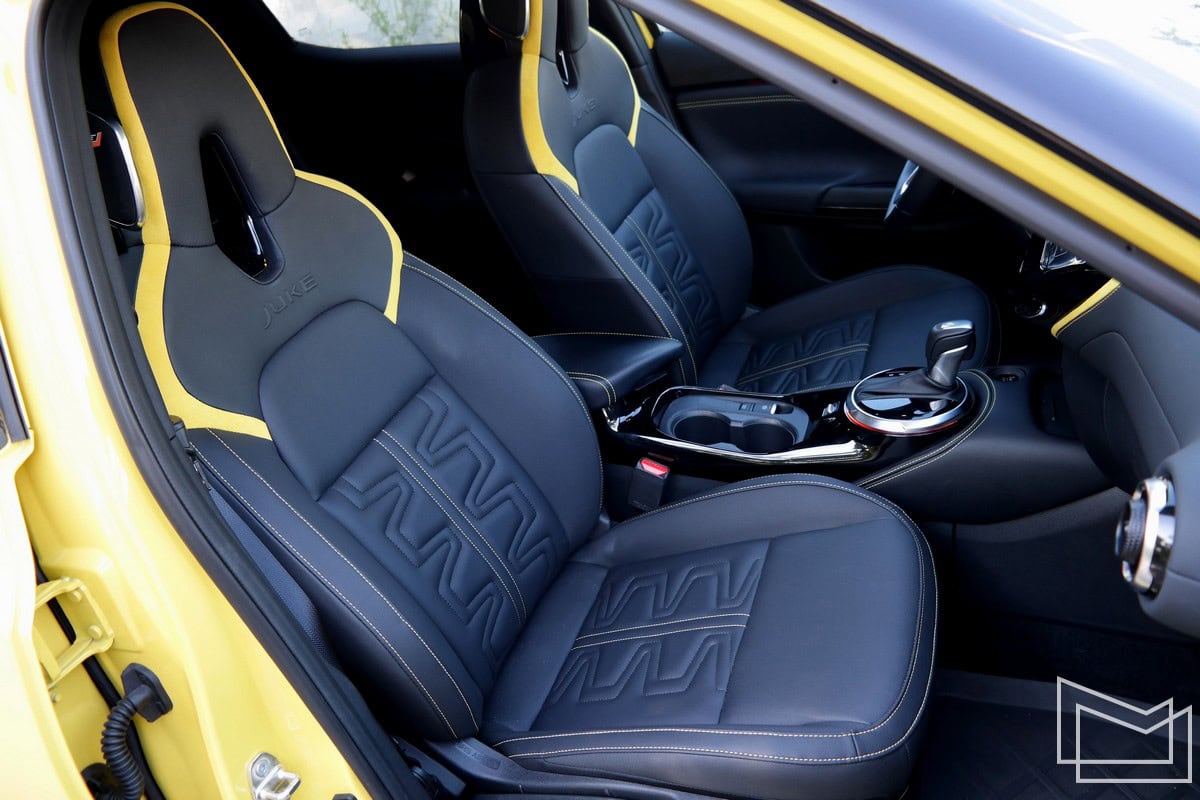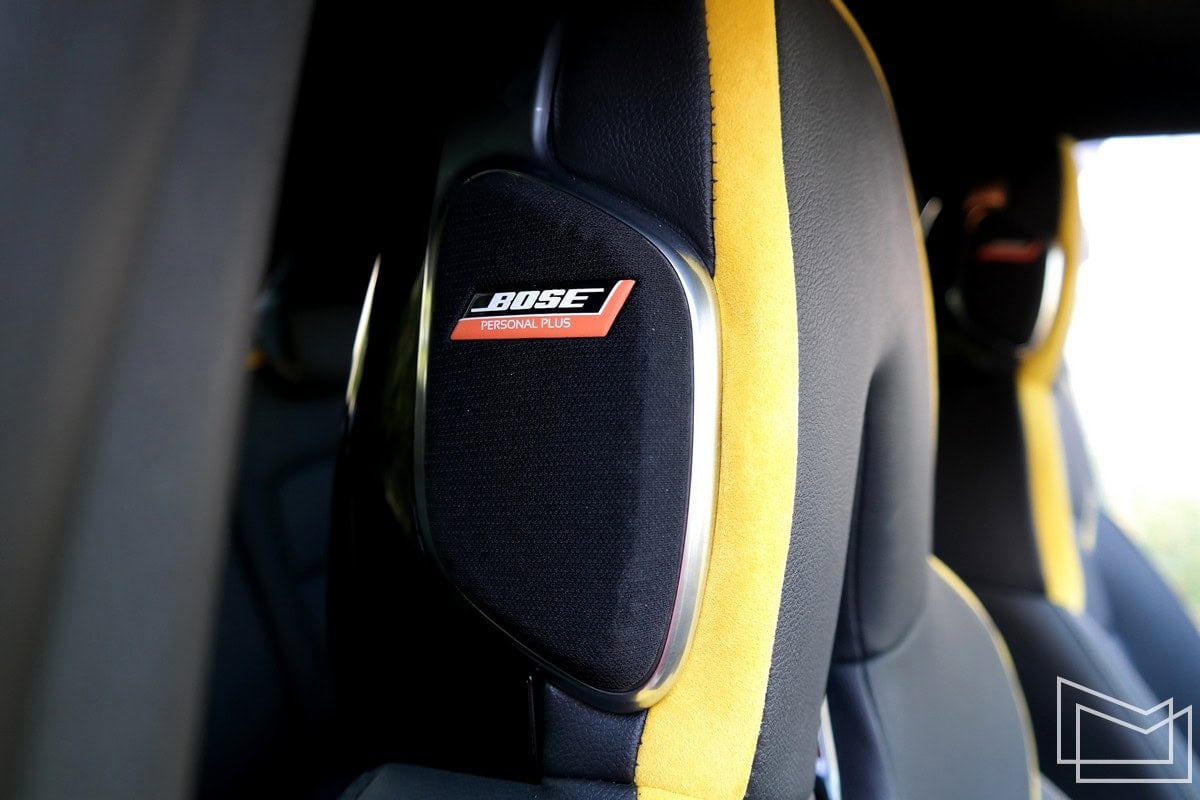The second-generation Nissan Juke crossover has been updated: it has a bright yellow color, a noticeably changed interior, and even a version with the provocative name N-Sport. How did all this come together in one car and what kind of cocktail did these ingredients create? I'm about to tell you!
Design: a novelty that is already familiar
The appearance of the Nissan Juke crossover hardly needs to be described, because the car is well known. And this statement applies to both the first and second generation Nissan Juke. Highlighted round headlights and a V-shaped grille insert, pointed lantern strips between the hood and front wings, hidden tailgate handles, a small trunk lid with a protruding spoiler - this is a description of which generation of Nissan Juke? Yes, both!
At the same time, the second-generation Nissan Juke is still noticeably different: stamped lines have been added to the doors, the roof is fashionably "cut off" along the pillars and painted in a different color, and instead of semicircular rear wheel arches, there are now longitudinal lines that turn into small lights. In addition, the 2024 model year update finally brought yellow back to the palette. At the same time, a new N-Sport package was also launched, featuring 19-inch Akari Black wheels and numerous black and glossy body decorations.
Several years have passed since the debut of the second-generation Nissan Juke - and this car still looks young and energetic; the bright yellow color further emphasizes this impression. The car's dimensions have not changed: length - 4.21 meters; width - 1.83 meters; height - 1.59 meters; wheelbase - 2.64 meters; ground clearance is 172 mm. The new N-Sport package, which appeared during the interim update, means the presence of numerous black and glossy parts: wheel rims, mirror housings, bumper and door inserts.
If the design of the Nissan Juke is an evolution when changing generations, then the change in its interior is a revolution. Moreover, it has already happened twice: first, the second-generation Nissan Juke received triple center deflectors, a small protruding display, a combination of familiar instruments and a screen between them. However, the 2024 changes brought a pair of large 12.3-inch displays - one acts as a dashboard, and the other is responsible for controlling the multimedia system and additional functions. The integration of these displays into the existing cabin required a change in the front panel, creating a "large wing" that the designers further emphasized with a contrasting insert. Finally, the update also included the addition of more traditional pull-out ventilation deflectors - from now on, round deflectors are only on the right/left. It's a shame: as for me, the round ones look more stylish and give you more freedom in controlling the air distribution: you can freely deflect them anywhere.
The rest of the interior remains unchanged. The front seats with integrated head restraints already look like a sports car - for example, the advanced side support already allows for this. However, due to this overly active support, the front seats squeeze people "in the body" and can be somewhat uncomfortable. But the Nissan Juke crossover is for young and flexible people, right? Perhaps also for their friends or small children: then they will have enough space in the back. That's because the Nissan Juke offers only minimal space in the back, a couple of USB ports and a niche for small items. However, there are no ventilation deflectors or armrests in the back, and there is no way to adjust the seatback: a short city trip - no problem; but for a long journey, you want to lean back more. The trunk is also not record-breaking, but only minimally sufficient in terms of space and functionality: 422 liters, a two-level floor, a pair of side hooks, a temporary spare tire; however, there are no side niches and no electric lid.
Impressions of the Nissan Juke interior depend on the month of purchase. In front, there are many design elements, cool seats with advanced lateral support, new displays with excellent image quality (we previously saw them on the Nissan Qashqai and Nissan X-Trail), a notable yellow décor and background contour lighting: everything is great! However, behind there is just a second row of seats and a trunk; but nothing more. The car is for the driver and passenger, and only then - for passengers and things.
Technique: fixed base, variable color and displays
The second-generation Nissan Juke crossover (model code F16A) made its debut about five years ago. Since then, it has not changed globally: the CMF-B platform, the supporting body, the McPherson independent front suspension, the rear semi-dependent suspension based on a transverse beam, the 1.0-liter DIG-T gasoline turbo engine with the HR10DDT code designation, front-wheel drive, and the 7DCT robotic transmission with dual clutches. In addition, the current Nissan Juke crossover had versions with a manual transmission at the beginning of its career - but they are not currently offered in Ukraine; and it also has hybrid versions with a 1.6-liter gasoline atmospheric engine and an electric motor - but it has never been offered in Ukraine at all.
Compared to the first-generation Nissan Juke, the second-generation Nissan Juke crossover has slightly increased its length and wheelbase (this is about interior space), and also slightly improved its body rigidity (this is about safety and handling). However, the second-generation car has lost all-wheel drive: all versions, in all markets, are front-wheel drive only. Although, let's be honest, such crossovers are rarely bought with all-wheel drive.
And now about the 2024 update: as I have already noted, the most important points of this update were the return of the yellow color and the appearance of two 12.3-inch displays; the list of packages was also slightly changed - this is how the N-Sport version appeared. A closer look reveals that the engine characteristics have also changed slightly: now it produces 114 hp at 5000 rpm and 200 Nm of torque at 3000 rpm - previously it was 114 hp at 5250 rpm and 180 Nm at 2400 rpm; but the front-wheel drive and the 7 DCT robot transmission remain unchanged. Surprisingly, according to the technical specifications, the increase in torque did not affect the acceleration from 0-100 km/h - 11.8 seconds is still promised. The technical specifications also promise a top speed of 180 km/h and fuel consumption from a minimum of 5.1 liters per 100 km ( WLTP high phase) to 7.5-7.6 liters per 100 km (WLTP low phase ). So...
Behind the wheel: when sport is a vital necessity
That's right! In SPORT mode, the small engine goes all out: it seems that only there does the conditional Overboost kick in and an additional +20 Nm of torque is delivered. In addition, the DCT box usually keeps the gears lower, so the engine is constantly in the zone of 2.5-3 thousand revs or higher - exactly where full torque is produced. The slightest press of the accelerator pedal instantly turns into a tangible acceleration; even if this acceleration is not shocking, the responsiveness of the response is very pleasant for an active driving style. At the same time, the maximum dynamic acceleration allows you to gain 5-5.4-5.5 thousand revolutions, reaching the maximum power zone.
Now add the responsive steering wheel, which consistently makes about 2.5 turns from stop to stop, but in SPORT mode is slightly heavier and requires more attention and concentration from the driver when turning. And now add the composite suspension, which almost does not allow rolls in corners, and low-profile tires (225/45R19) with almost no run-flats. What do we get in the end? When you fly around corners like this and accelerate briskly, the impression is that the Nissan Juke is a combination of a small motorcycle and a small-bore kart, only suddenly this whole structure has been designed as a crossover. The car's surprisingly lively and vigorous character fits perfectly with its design and color. Moreover, the impression is that the chassis is capable of handling a more powerful engine: oh, if only a 1.33-liter turbo with 150-160 horsepower were installed here, it would be the perfect N-Sport for fans of "heated" cars!
Have you had a good ride? Now let's take a break. Returning the car to standard driving mode significantly changes its character. The steering wheel has become lighter, which is understandable. However, the engine also no longer responds so actively to the accelerator pedal, and the gearbox shifts up a gear earlier. Moreover, while other preselective "robots" can jump through several gears in one go, in this case, the impression is that the DCT seems to be counting down or up each individual gear. Thankfully, at least you notice this only by the tachometer indicators and the sound of the engine - there are no pauses or breaks in traction during shifts. But there is suspension stiffness. All the things that were good during a vigorous drive are now perceived as a comment on comfort: why shake so much if I'm just going to work? I had the experience of driving such a Nissan Juke in the version with higher-profile tires on 17-inch wheels - and I have to admit that this is the best option, no matter how much you like 19-inch wheels: in terms of comfort and safety of tires/disks on bad roads, you win much more than you lose in terms of handling.
A small 1.0-liter turbo engine can sometimes create a small miracle: 0-100 km/h within 11 seconds, which is much faster than promised! However, in standard mode, it turns out to be 0.3-0.5 seconds worse, and the ECO mode is generally unnecessary - huge pauses when pressing the accelerator pedal, almost always 1.5-2 thousand revolutions, where the engine is frankly weak. At the same time, it is possible to achieve good economy in standard mode, you just need to be careful with the accelerator pedal: I consistently got 7.5-8 liters per 100 km in the city; the minimum (open roads and economical driving style) can be below 7 liters, the maximum (dynamic driving style) barely exceeded 9+ liters; on the highway at a speed of 100 km/h, fuel consumption is 4.5-5 liters per 100 km. Perhaps these figures are no longer surprising today, but for a gasoline engine without any hybrid additives, these figures look quite good.
Cost: how much does the Nissan Juke cost and who are the rivals
The price of the Nissan Juke crossover is simple and straightforward: always a 1.0 DIG-T gasoline engine and a 7DCT transmission, you can choose from four packages, plus a couple of options - that's all.
The Nissan Juke in the N-Connecta version gets off to a flying start: six airbags, intelligent emergency braking system, lane keeping assist, mirror blind spot monitoring, rear cross traffic alert, automatic high beam switching, LED headlights and lights, heated windshield, 17-inch alloy wheels, keyless entry, climate control, heated steering wheel and front seats, fabric upholstery, background illumination of the doors and center console, shifter, rearview camera, digital 12.3-inch instrument panel, 12.3-inch central touchscreen display, Apple CarPlay and Android Auto support, wireless charging, six-speaker audio, standard navigation. The price of Nissan Juke 1.0 DIG-T7DCT N-Connecta starts from UAH 1.093 million or $26.4 thousand.
The next step is the Nissan Juke in the Tekna configuration, which adds: an intelligent 360-degree surround view system with four cameras, a moving object recognition function, black 19-inch Tekna wheels, eco-leather seats with stitching, etc. The price of Nissan Juke 1.0 DIG-T7DCT Tekna starts from UAH 1.142 million or $27.5 thousand.
The maximum options for the Nissan Juke are the N-Design and N-Sport configurations, which offer the following: two-tone body paint with a contrasting roof, BOSE Personal Plus audio with ten speakers, original 19-inch alloy wheels in N-Design or N-Sport style, personalization and inserts on the bumper and doors in Satin Grey (for N-Design) or Gloss Black (for N-Sport), black eco-leather interior with Alcantara inserts in black (for N-Design) or yellow (for N-Sport). Cars in the maximum configurations cost the same:Nissan Juke price 1.0 DIG-T7DCT N-Design or N-Sport - from UAH 1.225 million or $29.5 thousand.
Let me add a few interesting observations about versions and prices. Firstly, when the second-generation Nissan Juke started its career in Ukraine, it had simpler versions - with a manual transmission, in the Visia and Acenta trim levels. All this made it possible to reduce the initial cost: for example, a car with an automatic transmission and in the middle Acenta configuration cost about $22.5 thousand, which is a much more attractive price than the current initial price, even taking into account the higher N-Connecta configuration. Therefore, I hope that simpler configurations will be returned for the updated Nissan Juke. Secondly, I would also like to see hybrid versions of the Nissan Juke in Ukraine, but they are almost guaranteed not to be available: a complex hybrid will lead to a higher price.
At the moment, the Nissan Juke crossover immediately starts with the N-Connecta, which used to be, let's say, "above average, before the top"; so we immediately have large 12.3-inch displays, climate control, wireless charging, a very wide range of security systems, keyless entry, a rearview camera and much more. Did you see the camera in the front and in the mirrors, did you see the 19-inch wheels? This means even higher trim levels, which also offer combined seat trim and an audio system BOSE Personal Plus: in the headrests you can find additional speakers that create a stereo effect just at ear level - cool! But now a few words about what you won't find in the Nissan Juke: adaptive cruise control, the aforementioned electric trunk lid, a panoramic glass roof - all this is missing, which looks a bit strange for a modern and expensive B-SUV crossover. .
Moreover, competitors can offer similar equipment and add their own advantages. For example, the Peugeot 2008 crossover is similar in size, but there are more affordable versions and options with a diesel engine. The Honda HR-V and Hyundai Kona are more expensive, but they offer more spacious interiors and a hybrid in addition. The Toyota C-HR crossover is even more expensive, but it offers good comfort and powerful hybrids. The Volkswagen T-Roc has only a gasoline engine and front-wheel drive, but it has an excellent handling/comfort balance and good equipment. The not-so-young and inexpensive Suzuki Vitara crossover suddenly has a lot of modern equipment, as well as all-wheel drive and a turbo engine. And right now, a Jeep Avenger with a lower price tag is arriving in Ukraine, and there is also a Mazda CX-30 with all-wheel drive, and more... and more... It seems that this can go on forever, adding similar competitors - the class is very popular and full of rivals. It is not easy to win the fight for the buyer's wallet, but the Nissan Juke crossover is definitely not going to give up and is ready to emphasize its advantages. So, let's summarize...


